

How To Navigate Your Presentation Q and A Session Like A Pro
Table of contents.
Presentations are a pivotal part of professional life, an opportunity to share knowledge, influence decisions, and showcase expertise . But what truly separates the pros from the rest of the pack is not just the delivery of content but also their ability to master the art of the post-presentation Q&A session.
In this article, we’ll delve into strategies, tips, and insights that will empower you to confidently face any audience, tackle tough questions, and leave a lasting impression as a presentation maestro.
Is A Q & A Session At The End Of A Presentation Required?
A Q&A session at the end of a presentation is a common practice in many professional settings, including business meetings, academic lectures, and conferences. It provides the audience with an opportunity to seek clarification, engage with the speaker, and delve deeper into the topic discussed.

How Important Is Moderation In Your Q & A Session?
Moderation is highly important in a Q&A session, and its role cannot be overstated . Effective moderation ensures that the session runs smoothly, maintains a respectful and productive atmosphere, and maximizes the benefits for both the presenter and the audience.
Here Are A Few Tips On How To Moderate
Give audience members instructions on how to participate.
Encouraging audience participation as a moderator is vital for a successful Q&A session or discussion. Start by c reating a friendly and open atmosphere, setting clear expectations, and using open-ended questions that invite thoughtful responses. Actively engage with participants, ask follow-up questions, and acknowledge their contributions to foster a sense of inclusivity.
Rotate attention among panelists or presenters, promote written questions for larger or online sessions, and be patient, allowing participants time to formulate their thoughts. Summarize key points made by the audience and connect them to the main topic to reinforce the value of their contributions. Seek feedback at the end of the session to continually improve your moderation skills and enhance audience engagement.
Use a Moderating Tool To Improve Efficiency
Utilizing moderating tools is an excellent way to enhance the efficiency of discussions and manage interactions in online or live events. These tools typically offer features like question management, chat monitoring, and participant engagement tracking. To maximize their effectiveness, start by familiarizing yourself with the tool’s interface and capabilities before the event.
During the presentation or discussion, actively monitor incoming questions or comments, addressing them in real-time or queuing them for later. Use features like chat moderation to maintain a respectful and on-topic conversation, ensuring that disruptive or inappropriate content is promptly dealt with. Additionally, track participant engagement metrics to identify trends and areas that may need additional attention. By harnessing the power of moderating tools, you can streamline your role, keep the discussion on track, and create a more efficient and productive environment for all involved.
Prepare To Collect Unanswered Questions
You also need to be prepared to collect unanswered questions that you might not get to during the allotted time you have to present, have a system in place for noting down questions that couldn’t be addressed during the session, either submitted through digital tools or manually written, ensuring they are organized and ready for follow-up or future discussions. Make sure you have a clear and concise call to action in your presentation to achieve this.

Things To Think About Before Running Your Q & A Session
When running a Q&A (Question and Answer) session, there are several key considerations to keep in mind: Preparation, timing, audience engagement, question prioritization, complex questions, and audience diversity . Below, we will get into a few of these.
Let Your Audience Know In Advance When The Session Will Start
It’s essential to communicate the start time of the Q&A session to your audience effectively. By clearly indicating when the Q&A will begin, whether it’s at the end of a presentation or at a specified time during an event, you help attendees anticipate and prepare their questions. This proactive communication ensures that the Q&A session runs smoothly and that participants are ready to engage in meaningful dialogue when the time comes, enhancing the overall event experience.
Briefing Your Audience On The Format
At the beginning of the session, set clear expectations for audience participation. Explain the format, timing, and how questions will be received (e.g., raising hands, using a chat feature, or submitting questions in advance).
Leave Enough Time To Field Questions
Leavin g dedicated time during your presentation for a Q&A session is crucial as it allows for audience engagement, clarifications, and deeper exploration of topics, enhancing the overall impact and effectiveness of your presentation.
Stick To The Time Limit Allotted
Sticking to the time allocated for a Q&A session is of paramount importance as it respects both the audience’s and the presenter’s schedules. It ensures that the event remains organized, preventing sessions from running over and causing inconvenience. Efficient time management in a Q&A also allows for the inclusion of as many questions as possible within the allotted period, maintaining the engagement and interest of the audience. Additionally, adhering to the schedule demonstrates professionalism and consideration for attendees, making the entire event more enjoyable and productive.
Tips On How To Answer Questions In The Session
Navigating a Q&A session effectively is an art that requires both expertise and finesse. It’s not only about providing accurate information but also about engaging with the audience, addressing their queries thoughtfully, and managing the flow of the discussion. In the following tips, we’ll explore strategies for answering questions during a Q&A session that will help you enhance your presentation and foster a constructive and informative exchange with your audience.
Make Eye Contact With The Audience Member Asking The Question
Making eye contact with the audience member who is asking a question is crucial as it conveys attentiveness, respect, and a genuine connection, fostering a more engaging and interactive Q&A session.
Research Suggests Taking A Brief Pause Before You Answer

This momentary pause allows you to gather your thoughts, ensuring that your response is well-considered and accurate. It prevents rushed or impulsive answers, particularly to complex or sensitive queries, and demonstrates a sense of thoughtfulness and confidence to the audience.
Moreover, the pause offers your guests an opportunity to absorb the question fully and mentally prepare for your response. This moment of reflection can enhance clarity and comprehension, making the exchange between you and your audience more meaningful and effective. Ultimately, by incorporating a deliberate pause before answering questions, you not only improve the quality of your responses but also convey professionalism and a genuine commitment to providing valuable information. This article dives even deeper on the importance of a brief pause before answering a question.
Take A Pause And Call The Geeks. We Can Help!
1-888-206-9525
Make Sure You Understand The Question Asked Before Answering
Your confidence and expertise in the subject matter also matter. Check out our article to help guide you in being a better presenter . If you are well-prepared and knowledgeable about your topic you will easily be able to understand the questions being asked.
Additionally, knowing when you are being asked an irrelevant question, or a thoughtful question, is a key tool in helping you move through your Q&A’s. Be sure to hear what your audience is asking, and for any irrelevant questions, keep your answers short and move on to any potential questions that will bring your guests back to your key messaging.
Always Keep Cool, Calm And Collected
Maintaining a sense of calm during a Q&A is essential as it allows you to think clearly, respond confidently, and manage unexpected challenges or difficult questions effectively. It also helps create a positive and reassuring atmosphere, which can enhance your credibility and the overall experience.
If You Don't Know The Answer, Be Honest!

Being honest when you don’t know the answer to a question during a Q&A session is vital because it builds trust with the audience, maintains your credibility, and opens the door for future opportunities to provide accurate information.
Feeling Like You've Got Your Presentation Q and A Covered? Awesome!
You are now fully equipped to run a Q&A and moderate effectively! You’ve learned the importance of clear communication, timing, creating a welcoming atmosphere, and using pauses for thoughtful responses . You understand the value of being honest when unsure of an answer and the role of audience engagement and moderating tools. These skills will enable you to confidently navigate Q&A sessions for productive and engaging interactions with your audience.
Are You Ready To Make The Right Impression In Your Next Presentation? If So, Let's Talk
Make an impression that lasts with your next presentation. Use our presentation design service that will not only save you time and money, but create powerful sales tool that will make the right impression, first time around.
If you’re ready to begin working with award winning designers that have an established reputation, contact Presentation Geeks today by clicking the button below.
Author: Content Team
Related posts.

FREE PROFESSIONAL RESOURCES DELIVERED TO YOUR INBOX.
Subscribe for free tips, resources, templates, ideas and more from our professional team of presentation designers.
- SUGGESTED TOPICS
- The Magazine
- Newsletters
- Managing Yourself
- Managing Teams
- Work-life Balance
- The Big Idea
- Data & Visuals
- Reading Lists
- Case Selections
- HBR Learning
- Topic Feeds
- Account Settings
- Email Preferences
A 4-Step Plan to Make Your Q&A More Audience-Friendly
- Lauren Weinstein
- Matt Abrahams

Preparation will make even a casual Q&A more useful for your audience.
The Q&A or fireside chat has become a popular format at events like conferences and employee town-halls, replacing more-formal presentations and panels. But to make the format work, the person being interviewed has to prepare. Four steps — easily remembered by the acronym FIRE — can help. First, think about framing . Instead of focusing on what you want to say, figure out what you think your audience needs to hear. Second, pay attention to inclusion . Use language that brings your audience along with you. Third, organize what you have to say with rails , or a structure like “Problem-Solution-Benefit,” “Comparison-Contrast-Conclusion,” or “What? > So What? > Now What?.” Last but not least, examples will illustrate what you have to say and make it memorable.
The Q&A or fireside chat has become a popular format at events like conferences and employee town-halls, replacing more-formal presentations and panels. The one-on-one format can create a more conversational, interesting, and intimate experience, and has the added benefit that the CEO or luminary being interviewed theoretically doesn’t have to prepare as much.
- LW Lauren Weinstein teaches Strategic Communication and Effective Virtual Communication at Stanford University’s Graduate School of Business. She is co-founder and principal of Resonate Coaching , a presentation and communication coaching firm.
- Matt Abrahams is a lecturer in organizational behavior at Stanford Graduate School of Business. He hosts Think Fast, Talk Smart: The Podcast and is the author of Think Faster, Talk Smarter: How to Speak Successfully When You’re Put on the Spot .
Partner Center
How to Manage Question and Answer Sessions (Q&As) in Your Presentations
Allowing the audience to ask questions after a presentation is a popular way to finish, and it has many advantages. You get direct contact with your audience, and the chance to clear up any ambiguities. It’s a good way to show commitment to and interest in your audience and gives you the opportunity to really deepen participants’ knowledge of your subject.
However, Q&A sessions are not risk-free; they can get out of hand pretty quickly if you don’t manage them properly. Questions unrelated to the topic pop up, criticism of the presentation swells in volume, or someone wants to make a name for themself and hogs all the speaking time, leaving others frustrated. Good management of Q&A sessions involves excellent advance planning and a certain tact and sensitivity.
The following tips will help you get the most out of your Q&As.
Respond to Questions Positively
Always answer questions positively and with gratitude. Creating a good atmosphere in which no one is afraid to speak out is paramount. A simple “Thanks for your question” or “Thanks very much; you raise an interesting point” before you answer in detail helps to ensure this.
Repeat the Question
It is really important to repeat every question. Most of the time, there’s no microphone for the audience to use, so the only way to ensure that everyone has heard the question is for you to repeat it. Not only will all your audience then get something from the answer, but you will (hopefully!) prevent the same question being asked more than once.
Thoughtful Answers Need Thinking Time
It is important to give well thought-out and structured answers, even if you need a bit of thinking time. Resist the urge to respond immediately; take the time you need to give a clear answer. Audiences are more patient than you might think and will appreciate not being fobbed off with a shoddy or bungled answer.
Restate Irrelevant Questions
Chances are that at least one question in your Q&A will be nothing to do with the topic at hand. With a little practice, however, you can restate such questions to make them fit in the context and allow the answer to create added value for your audience. You need to work out which aspects of the question do fit the presentation and reword the question to focus on them.
Allowing random questions can sometimes be a challenge! Thinking about how to reshape any question to make it relevant does wonders for your self-confidence, though. With good preparation and a little practice, the benefits can outweigh the disadvantages and really liven up your Q&A sessions.
Prepare for Q&As Thoroughly
Before any Q&A it’s vital to have a good think about what questions might arise. Once you’ve finished creating your presentation, study it carefully with this in mind, noting any possible areas which could be questioned. This way, you can think of possible answers, meaning you’ll be far more secure in the Q&A. A trial run in front of a test audience can also be useful, especially if you encourage them to ask absolutely anything! If there are any questions you really don’t want asked, you can modify the content of the presentation to avoid them.
You will come across as particularly professional and well prepared if you’ve prepared a few extra slides containing additional information, graphics, etc, specifically for the Q&A session. The content for these flows naturally from imagining what you might possibly be asked.
Establish the Rules in Advance
Are you going to allow questions during your presentation or leave them until the end? Or both? Decide beforehand when questions will be allowed; this is totally up to you. Experienced speakers are usually not put off by questions during the presentation. Leaving questions until after the presentation, though, is just as legitimate, prevents interruptions and also facilitates time management. If you’re an inexperienced or nervous speaker, this is probably a better way to organize things.
Q&As vs. Discussion
When planning your presentation, you need to think about how much discussion (as opposed to single questions and answers) you are comfortable with. Intense discussions can of course be interesting and enriching, but there’s a risk of them being dominated by a particular person or faction, leaving the rest of the audience irritated. You can head such situations off with sentences like “I think we should let someone else have a say now”, or offer to continue the discussion at a later date. It’s up to you.

React Calmly and Confidently to Aggressive Questions
There’s generally at least one troublemaker at every Q&A. They try to corner you with negative or aggressively formulated questions (often several at the same time). Often people who know the topic well, and can rebut your answers, their underlying intention is definitely to provoke. In such a situation you need to react confidently and not go on the defensive.
The trick is to remain calm and in control, and try to turn the conversation in a positive direction. Conceding that they have a point, or that you agree with certain of their reservations, creates perceived agreement; this can defuse the aggression.
Another bugbear is questions which were already answered comprehensively in your presentation, so it’s obvious that the questioner wasn’t actually listening. In this situation, try to avoid making them look foolish in public by such phrases as “As I’ve already explained …” – the best tactic is simply to answer the question in a calm and friendly manner.
How to Manage a Flurry of Questions
Some people will throw several questions at you at the same time. It’s almost impossible to keep them all in mind while answering. So the best tactic here is to choose an easy question and answer it thoroughly, allowing the questioner to follow up on it and the other topics to build organically into the discussion. Asking “So, you had another question?” will either elicit a repeat of an important question, so you can answer that with the attention it deserves, or, interestingly, you will have covered the ground in the preceding discussion, and the questioner will declare themselves satisfied.
Don’t Guess!
You don’t have to have an immediate answer for every single question. Someone in the audience may have new information, or perhaps you don’t have the relevant figures to hand. Bluffing in such circumstances is a very weak response and can turn people against you. Honesty really is the best policy here: if you don’t know the answer, admit it!
If you want to answer but need to make assumptions to do so, you have to make it very clear that you’re proceeding on assumptions, and state what they are.
Either way, you can promise to contact the questioner with an answer later if that works for you.
Exercise Discretion
Some questions can’t be answered; others mustn’t be answered. These might involve such things as internal company matters or data protection issues. An answer such as “I’m sorry, but I’m not allowed to say anything about that” might get your point across, but is a bit harsh and dismissive. It works far better to invoke your audience’s sympathy with something like “I’m sure you’ll understand that I can’t …”.
Set Boundaries
Sometimes Q&A sessions come to a close naturally, simply because the questions dry up. However, you can’t automatically assume this. Have a plan in place to prevent the Q&A dragging on forever. You can do this at the beginning by clearly specifying a certain number of questions or a particular time frame for questions. If you prefer to leave the Q&A more flexible, then have a few phrases prepared that will bring things elegantly to a close, for example, “We still have time for one last question”.
In an Emergency: Break the Silence at the End of Your Presentation!
Even if you’ve prepared thoroughly for questions after your presentation, nasty surprises happen. Like the time when your cheery “So, any questions?” is met with deafening silence. Most of the time, this has nothing to do with how well you presented, and a lot to do with the reluctance of the individual members of your audience to speak up. It might help to phrase your invitation to speak more gently, e.g. “I’d love to answer any questions you might have”.
You could also start the Q&A session with something like “What people often ask about this is …”. This often leads to follow-up questions and breaks the ice. Questions to the audience, such as “So what’s your experience of this topic?” can help. You could also prime a third party (maybe the moderator, if you have one) with a few initial questions, to warm the audience up.
Armed with this knowledge, and having prepared thoroughly, you’ll find that Q&A sessions can be not just survivable, but actually interesting and informative. New perspectives are suggested, new options appear. Your hard work has reaped rich rewards. Good luck!
Share this post
- share
- save

Design Thinking: Problem Solving with a Difference

Why Corporate Mission Statements Are So Important

7 Tips & Learnings from the Apple Keynote

15 Tips That Guarantee A Productive Q&A Session
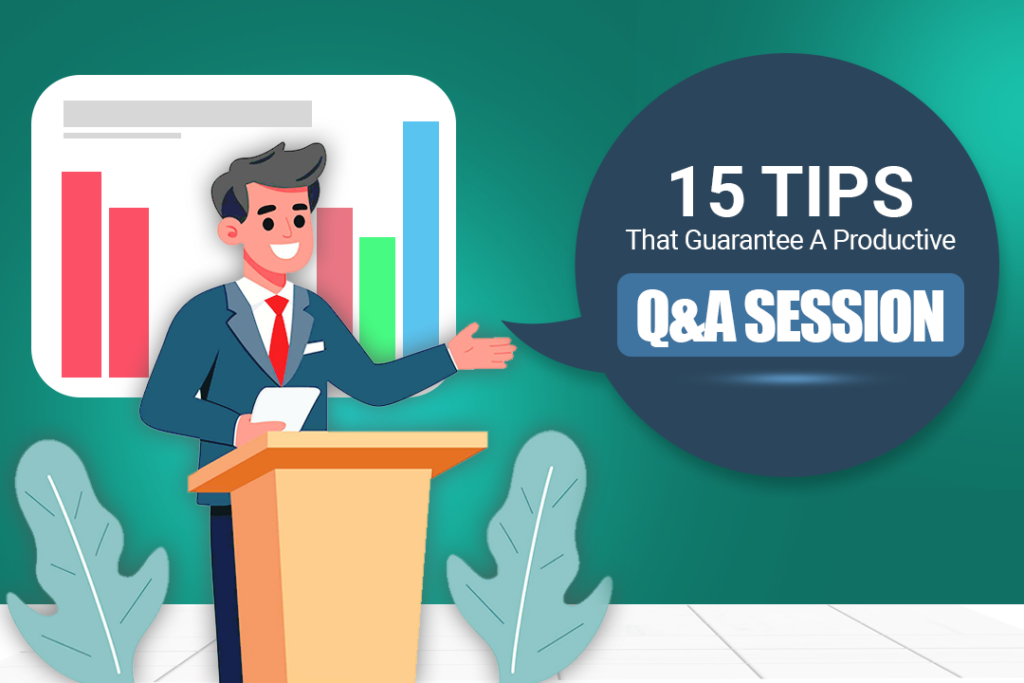
Conferences and events often include question-and-answer sessions as an integral presentation component or as standalone segments. These Q&A sessions allow audiences to delve deeper into specific subjects or pose questions to individuals they might not typically have access to.
Hosting a successful Q&A session may not always be a cakewalk. It requires the moderator or emcee to manage the time effectively, structure the session strategically, encourage active participation from the audience, and much more. Let’s delve into the tips for hosting a successful Q&A session.
Table of Contents
- What is a Q&A session?
- 15 Tips to host a successful Q&A session 2.1 Define Clear Objectives 2.2 Structure the Session 2.3 Undergo Thorough Preparation 2.4 Concise and Clear Responses 2.5 Enhance with Visuals 2.6 Encourage Active Management 2.7 Facilitate Effective Moderation 2.8 Focus on Relevance 2.9 Nurture a Positive Atmosphere 2.10 Guidance for Off-Topic Questions 2.11 Inclusive Participation 2.12 Facilitate Dialogue 2.13 Balanced Question Selection 2.14 Adaptability to Challenges 2.15 Effective Closure and Follow-up
Challenges Faced During a Q&A Session
Key takeaway, what is a q&a session.
A “Question and Answer Session,” or “Q&A Session,” is when a presenter interacts with an audience by answering their questions. Hosting a Q&A session is very important from the point of view of engagement, as participants stay engaged through interactive conversations that keep them interested and focused.
It can also help participants understand the discussed issue as they can ask questions to understand complex subjects better. It also ensures personalized learning, as asking tailored questions makes the information more relevant to the person’s requirements.
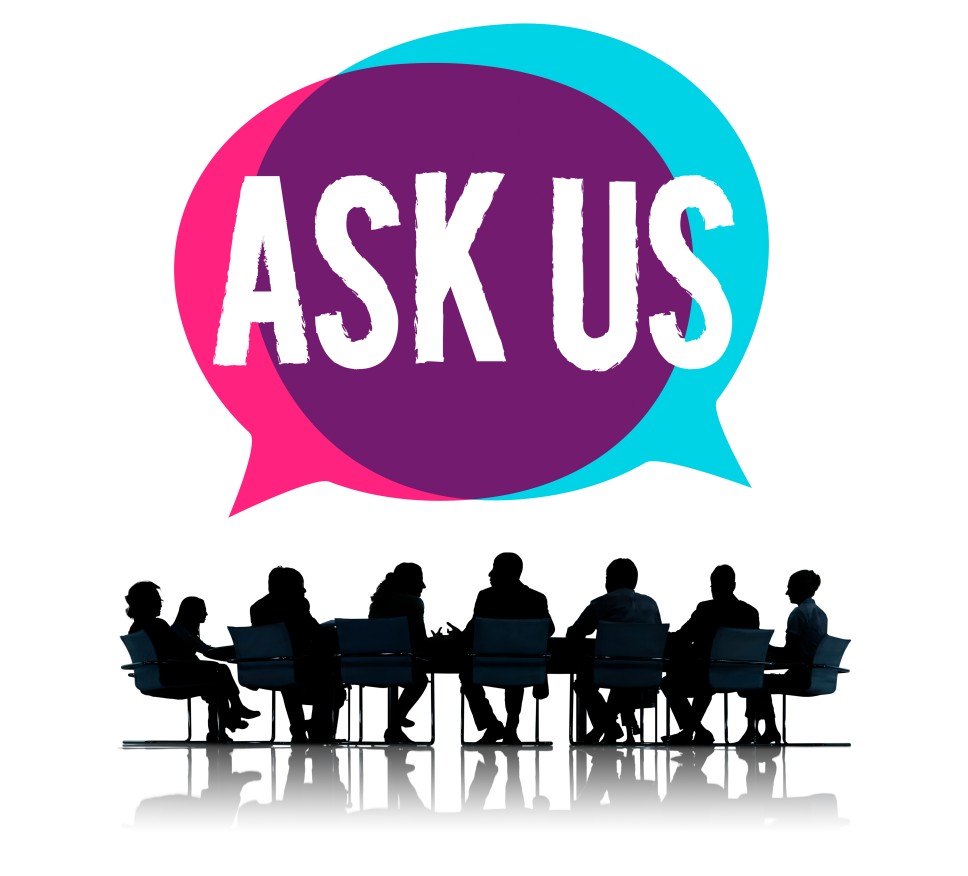
Furthermore, it promotes problem-solving as these Q&A sessions address issues and provide immediate, useful answers. Q&A sessions help people engage with the content and learn more effectively.
15 Tips to Host a Successful Q&A Session
While we know Q&A sessions and why they are so important, let’s look at a few tips to help you conduct a successful and effective Q&A session. This section below will contain tips for each stakeholder- presenter, moderator, audience, and organizers. We hope these tips help each of you achieve your goals at the conference, enhance attendee engagement, and improve your interaction with the audience.
For the Presenter-
Here are a few pointers that a presenter should keep in mind for a successful Q and A session-
1. Define Clear Objectives
First, clearly define the objectives for a successful Q&A session. This means outlining the specific goals and expected outcomes. This clarity creates the foundation for a concentrated and deliberate relationship. Stating these goals can guide participants and shape the conversation’s direction. To do so, follow these steps:
- Choose the main goals you hope to achieve during the Q&A session. Are you hoping to exchange information, solve issues, or generate creative ideas?
- Create straightforward statements that convey each purpose. Use language that is easily understood by your intended audience.
- Before the session starts, inform the participants of the goals. This provides background and aids in establishing expectations.
- Maintain a direct connection between the objectives and the session’s central theme.
2. Structure the Session
Plan how the discussion will go and what will be discussed for a good Q&A session. This strategy helps more people participate, keeps things organized, and makes the session impactful. This is how you do it:
- Begin by outlining the session’s goal, objectives, and any participation rules.
- Establish the speaker’s credibility by briefly outlining their expertise or history.

- You can begin with quick opening comments that establish the tone for the Q&A.
- The majority of the session should be devoted to questions and answers. The speaker can discuss multiple topics while emphasizing their significance to the main theme.
- Give each question a time restriction to guarantee a detailed discussion. This will save time on certain topics.
3. Undergo Thorough Preparation
Preparing well for a Q&A session is important. It helps you gain a thorough understanding of the topic so that you can effectively tackle the questions after the presentation. For tips, check out our article on Public Speaking Techniques to Leave a Lasting Impression.
If you are a presenter and are wondering how you prepare for the presentation like a pro, we have a few techniques explained ahead for you that will help you in the process:
- Firstly, consider what your audience is interested in, what they know, and their history when responding. That will help you prepare accordingly.
- Secondly, you need to understand the topic of discussion to answer effectively and fully.
- While preparing the presentation, think about the questions the participants might ask and plan smart answers beforehand. This is crucial to establish your credibility as a moderator.
- Track new advancements in the field to stay updated with the latest information. This will help you tackle any challenging questions that may come your way.
- As you prepare your key points, find important details, examples, stories, or statistics to improve your replies. Doing so will add credibility to what you have to say. To get more interesting ideas to make your presentation successful, read our article, “ 17 Impactful Persuasive Techniques to Become a Master Public Speaker .”
- Also, remember to simplify complicated concepts while answering the audience, as you don’t want to lose their attention along the way.
4. Concise and Clear Responses
Speakers should always keep their responses short, clear, and focused on the problem when answering questions. Before organizing the Q and A session, you should also thoroughly research and prepare for the session’s main theme.
In an excerpt from the 2016 Japanese textbook called “NIG Method for Scientific English Presentation by Tatsumi Hirata, Todd Gorman, and Yash Hiromi’’, the authors discuss how to interpret certain questions under various circumstances. According to the journal, this practice guarantees the participants receive correct information while avoiding needless discussions or confusion. This is how you can do it:
- As soon as a question is asked before replying, take the time to comprehend the question thoroughly.
- Address the questions using facts, figures, and substance. This shows your preparation for the topic. Avoid technical jargon that may mislead people.
- Summarize key points separately if the question is open-ended and long.
- You can also use analogies to simplify some difficult topics.
- Try to avoid repeating the same material in multiple ways.
- Inquire whether the participant understood your response or if they want more clarity.
5. Enhance with Visuals
A research paper published in May 2023 in Multimedia Tools and Applications, titled “ The Influence of Product Digital Visual Presentation on Purchase Willingness: effects of Roundedness Axes and Degree,” explores how different shapes and colors in a presentation affect one’s attention. These responses to stimuli make one focus more on the screen. Pictures, charts, graphs, or slides can reportedly make a Q and A session more understandable. These visuals show concepts, statistics, or ideas. Visual aids make complex content easier to understand. They add depth, clarity, and interest. This is how you do it:
- Choose graphics that directly support the presentation’s contents.
- Put clear, uncluttered graphics that are easy to understand.
- Turn statistics or data into aesthetically appealing charts or graphs.
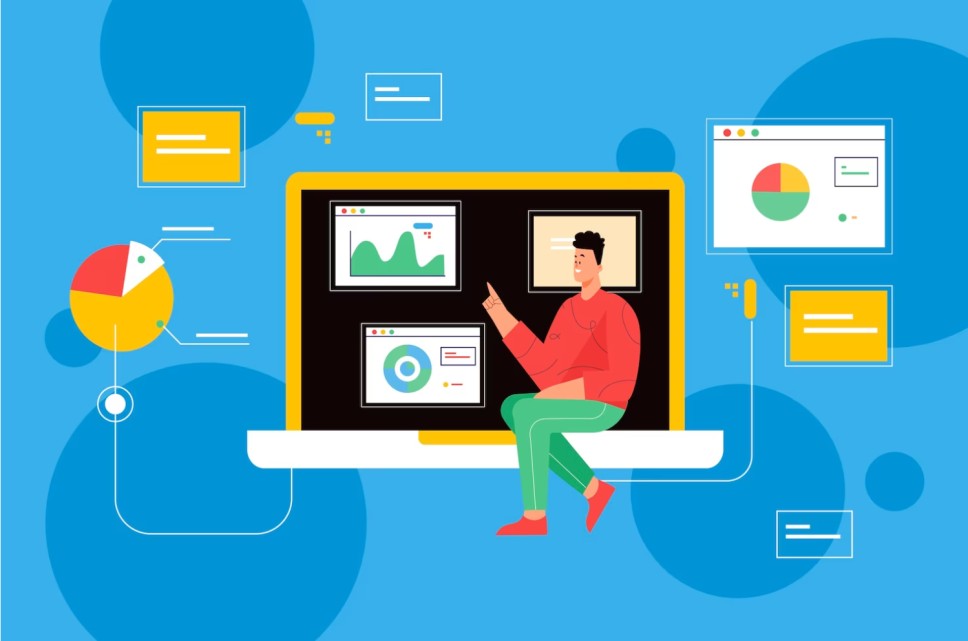
- To show concepts, procedures, or scenarios, use visuals or diagrams.
- Avoid using too much text in your presentations, as it can make the screen look cluttered; instead, concentrate on visual depiction.
- You can use colors to emphasize and distinguish different aspects or use specific colors and shapes to highlight specific information.
- For your participants to understand everything thoroughly, explain every visual depiction from your presentation.
While we are on the topic of presentations, you should also check out The Gazebo- B2B speakers directory. If you’re a speaker or want to be one, join our Gazebo Speaker Community by filling out a small Google form . Once you’ve made your profile on this platform, you can also upload your presentations and creations with fellow community members and expand your connections.
For the moderator-
For a Q and A session to be successful, a moderator must consider these key pointers carefully-
6. Encourage Active Engagement
To get more people involved in a Q&A session, it’s important to empower them. Participants should feel encouraged to ask questions and share their views. This active engagement raises the session’s depth and richness. So as a presenter, you can adhere to a few important ways, as mentioned below-
- Begin the meeting with a kind and welcoming introduction that invites participation.
- To establish the tone for the conversation, prompt participants to ask questions.
- Start with a few icebreaker questions to establish rapport and show openness. It is extremely important to ensure that everyone feels welcome and at ease asking questions.
- Let people share their thoughts and stories about the subject by giving them the floor open for their words.
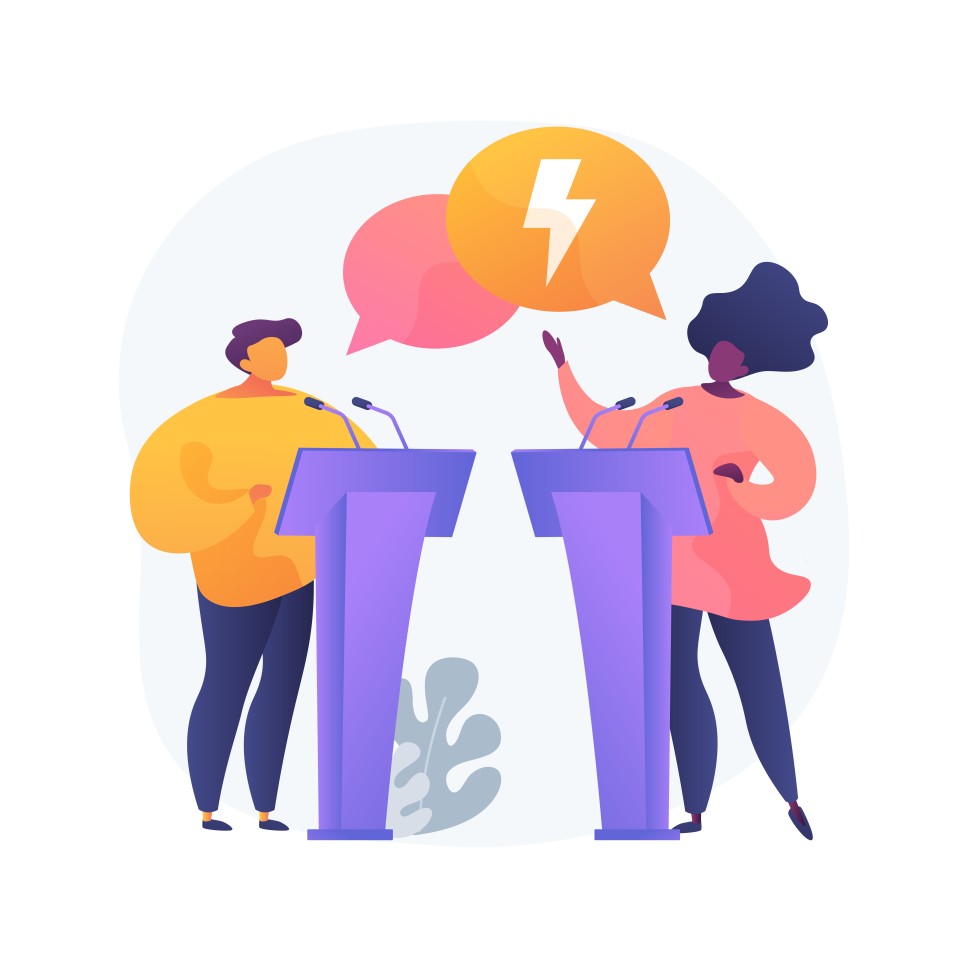
- Invite participants to ask follow-up questions to dive deeper into specific aspects.
- You should also encourage participants to answer each other’s questions and explain further to promote interaction.
7. Facilitate Effective Moderation
The moderator should ensure a balanced and productive conversation during a Q&A session by managing its flow and dynamics. A good session runs smoothly, involves people, and gives everyone value.
Here are a few steps to effectively moderate your session:
- Introduce yourself at the beginning of your session. Include your background and expertise on the topic and explain how you can moderate that session for your current audience.
- Before the session starts, explicitly announce your session’s participation criteria to your audience. This ensures courteous and helpful conversations.
- Give each question a specific time limit to keep things on track and maintain a good pace.
- Explain the session’s rules in the beginning. Make sure to inform them beforehand that you can step in as a moderator if some queries take too long. This needs to be practiced so everyone can have a turn to speak.
- Use transitional statements to move between queries.
- Maintain a neutral and respectful demeanor, especially when dealing with potentially contentious issues.
8. Focus on Relevance
As a moderator, you must ensure that the questions and their replies are related or always circle back to the session’s main theme to keep it relevant. Using this method helps everyone stay focused and get the most out of the session. Follow the instructions below to make the most out of your session:
- Encourage participants to ask any queries that they have about the main topic of discussion.
- If a question deviates from the major issue, gently steer it back to the right topic.

- As a moderator, if you are dealing with a large volume of questions, prioritize the ones that are closely related to the subject.
- Allow for larger debates about the core issue while remaining on topic. This helps in audience engagement and promotes open discussion about the theme.
- Politely acknowledge fascinating questions that are outside the scope of the present discussion that’s going on. And if you choose to answer them, tie your responses to the main subject to foster relevancy.
9. Nurture a Positive Atmosphere
Participants need to feel comfortable and respected to make a Q&A session positive. It’s important to encourage them to ask questions and share their ideas. Promoting optimism increases involvement and leads to a fruitful and courteous debate. Use the following actions:
- Start with a friendly introduction to set a positive tone from the beginning and make your participants feel comfortable.
- Recognize the significance of each participant’s questions, regardless of how complex their query is, and try to answer it with much poise and factual accuracy.
- Provide positive comments or expressions of thanks for smart or thought-provoking inquiries.
- To create a respectful environment, answer with courteous words and a considerate tone. Use statements like- “That is a wonderful question,” | “I appreciate your curiosity,” and similar statements.
- If you have disagreements or confrontations among participants, you should handle them politely.
- When meeting in person, remember to make eye contact, use friendly body language, and have a positive attitude.
- Thank the participants for coming and for their interest in the session topic.
10. Guidance for Off-Topic Questions
During a Q&A session, make sure to redirect participants who ask unrelated questions politely. To keep the session helpful, redirect the debate and focus on the theme. To ensure that your sessions don’t derail and provide maximum useful outputs, follow the steps below:
- Begin by recognizing the question and its importance to the participant.
- Transition politely by announcing the session’s main focus. This needs to be practiced as many times as needed during the session.
- First, determine a link between the off-topic query and the main theme. Then, as a moderator, show genuine interest in the off-topic inquiry, even if you can’t answer it completely.
- Return the discussion to the core topic and explain to your participants why you did that.

- Toward the end of the session, provide resources that can answer the off-topic queries raised by your participants during the session.
- If the participant requires further help, encourage them to contact you directly.
11. Inclusive Participation
As a moderator or organizer, you must create an inviting and respectful environment for diverse participants to engage in a Q&A session. This method encourages more diversified and interesting sessions that benefit all participants. To do this, follow these steps:
- Begin with an introduction that emphasizes the importance of different points of view. This will ensure that all your participants feel included and are encouraged to participate freely.
- Choose a language that will not alienate any group of participants. It is important to make everyone feel comfortable consistently and included in the discussion.
- Create an opportunity for every individual to express themselves. If needed, highlight a few participants with different backgrounds and who have some expertise related to the topic.
- Ensure that both in-person and virtual participants have equal opportunities to engage.
- Recognize that involvement styles might differ (verbal, written, etc.).
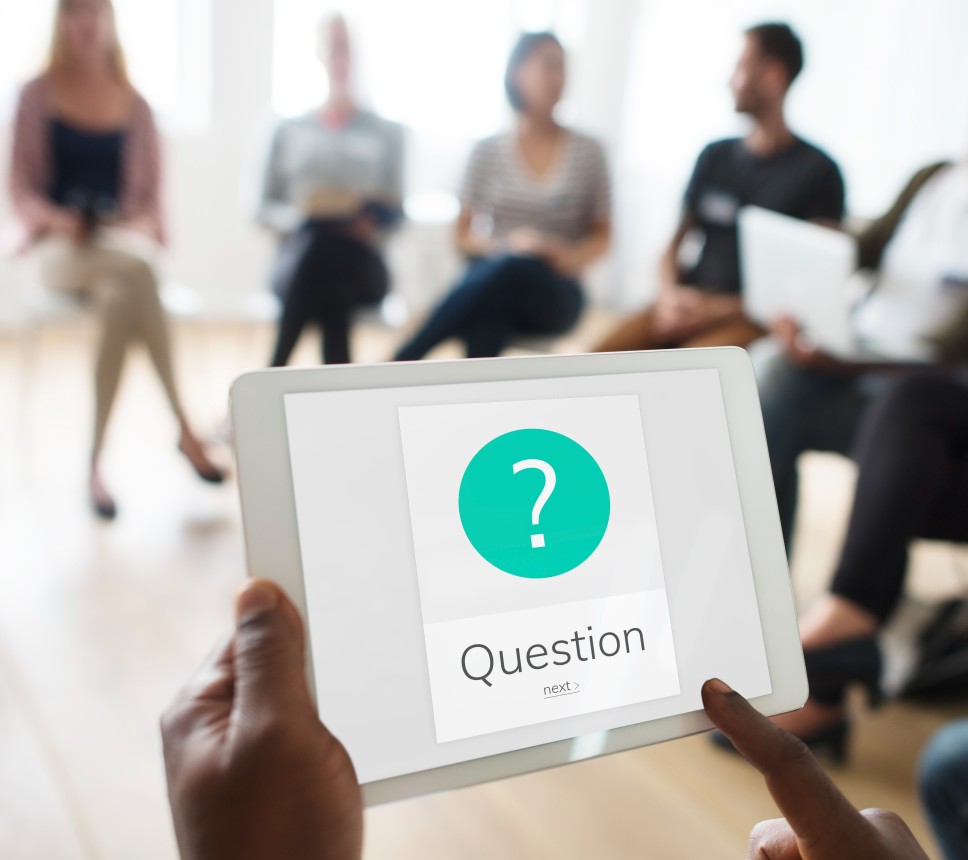
- Allow participants to ask questions either in person or virtually. Check out some Conference Tools to help organizers and participants with this experience.
12. Facilitate Dialogue
Promoting meaningful conversations between participants is extremely important in a Q&A session. This strategy goes beyond simple conversations. It creates an atmosphere where participants build on each other’s ideas and discuss with each other. Below mentioned are some steps you can practice to implement meaningful discussions:
- Encourage attendees to react to one another’s questions or remarks.
- Pose questions that inspire a variety of perspectives and in-depth replies. Then, open the floor for such discussions to ensure maximum engagement.
- Connect replies from one attendee to another one’s query to establish a continuous dialogue among participants.
- Address opposing ideas respectfully and facilitate meaningful debates.
- Encourage participants to go into depth about certain topics by allowing follow-up questions.
- Share relevant experiences as a presenter and open the stage for attendees to discuss their inputs as well.
For the audience-
Audiences are the most integral part of a Q and A session. For your audience to be satisfied, remember the following points while planning the Q and A session-
13. Balanced Question Selection
In a Q&A session, choosing a mix of questions that cover different views, topics, and difficulty levels is important. As per an article published in 2016 by Nielsen Norman Group ( a collaboration of all world leaders), questions can be of two types: Open-Ended and Close-Ended. The report’s authors advise to pose more open-ended questions to uncover more insights. They also advise attendees to fine-tune their questions and assess whether they can be answered with a simple “yes” or “no.” If they can, rephrasing them to explore the “how” and “what” aspects in greater detail is highly encouraged. Having said that, there are situations where one may need to restrict response options, such as when free-form or write-in answers are not practical or manageable.
Here are a few things to remember before selecting a mix of questions to ask the speaker/panelists.
- Before the session, review submitted questions to ensure a fair mix.
- Include questions that touch on many facets of the major subject to cover multiple themes, such as factual, conceptual, and application-based questions.
- Choose questions that are appropriate for both beginners and experts.

- Ensure your questions include a wide range of demographics, experiences, and points of view. And tailor these questions to the demographics of your participants.
- Combine simple questions with ones that need more in-depth answers.
- Include questions on recent advances in the field.
- Incorporate questions that are widely relevant, as well as those with unique subtleties.
For the organizer-
A successful Q and A session hinges on the organizer keeping in mind various crucial aspects, as outlined below-
14. Adaptability to Challenges
An organizer can face challenges throughout the conference and should always have a backup plan for it. The most important quality to possess during a challenge is – Flexibility. Flexibility means handling problems and tough questions gracefully during a Q&A session. This method shows how well you handle challenges, stay calm, and make participants happy. To do it, follow the instructions below:
- You should prepare contingency plans for any potential problems. To know more about such problems, keep reading this article.
- If a problem emerges, change the session schedule to accommodate it.
- Redirect questions that are outside the topic of the session.
- Address complicated or delicate issues courteously and respectfully.
- If the first format fails, try a new mode (e.g., Q and A panel, open forum).
- The moderator should respond to negativity with positivity and positive replies only.
- Even during difficult conversations, maintain respect and professionalism.
- Adapt and enhance any upcoming conferences or sessions based on the feedback provided by your participants.
15. Effective Closure and Follow-up
You must end the discussion meaningfully to close and follow up well in a Q&A session. Also, give participants chances to join in later or get more information. This conclusion ensures that participants have the option to continue learning. Here’s how to efficiently end a session:
- Recap through all the important points and ideas addressed throughout the discussion.
- Thank your attendees for their participation, questions, contributions, and engagement.

- Include any upcoming relevant seminars, workshops, or events that may interest your attendees.
- Invite attendees to provide comments to enhance future sessions. Read our article on Conference Feedback to help you plan your next event .
- Share your contact information with the participants if they have any extra inquiries.
- Share social media handles or details for any community related to the conference agenda. This will encourage the attendees to continue their conversations.
- After the session, make any recording or a summary of the discussion available to the participants.
- Thank all your attendees personally for their presence through follow-up emails.
- Always end a discussion using a motivational or uplifting statement. This ensures that the overall conversation ends on a positive note/
Once you know how to plan a successful session, remember that issues can still arise during Q&A. These may include:
- Time Management: Balancing time while dealing with a myriad of questions can result in hastily finishing off the questions. Hence, the moderator should be affluent in managing their time while dealing with each question.
- Irrelevant Questions: Off-topic questions might derail the conversation from the session’s main point. This can also lead to a waste of time. That’s why you should always gently veer back the whole discussion to the main theme.
- Limited Participation: Encouraging all guests to ask questions might be difficult, as answering each query requires a lot of facts and examples to be presented. So, as a speaker, you should encourage the participants to share their stories and experiences while answering each other’s questions.
- Sensitive Topics: Q&A sessions tend to reveal sensitive discussions among the attendees. There is a famous saying by Albert Einstein – “Curiosity has its own reason for existing,” which implies having to deal with all kinds of curious brains and their questions civilly.
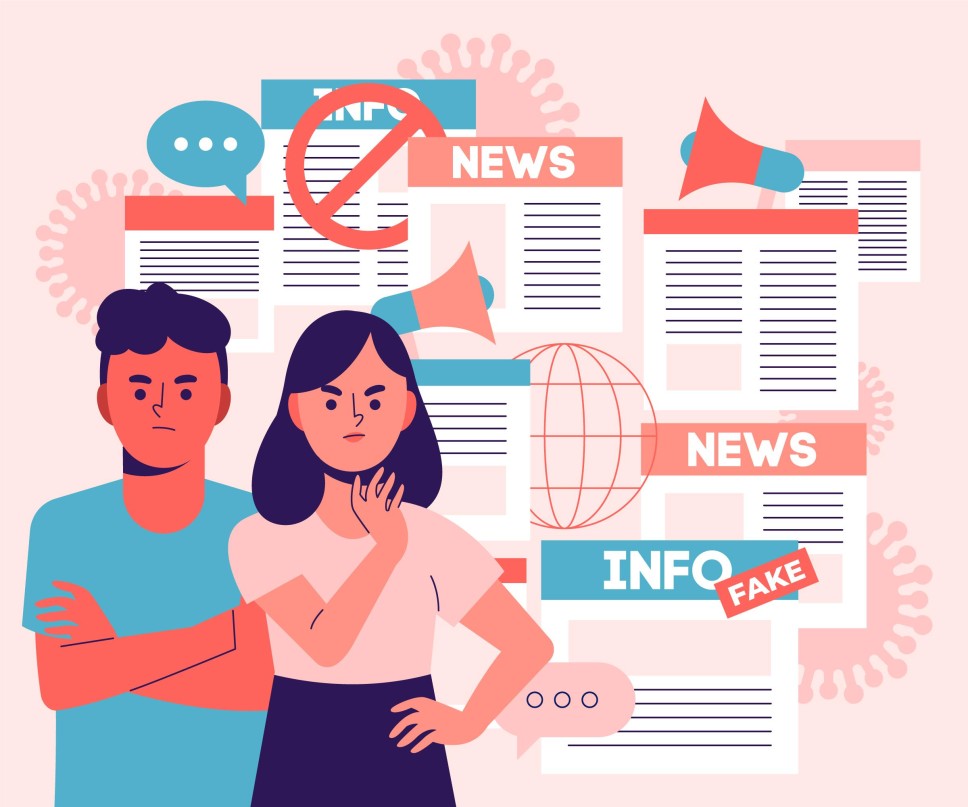
- Volume of Questions: These sessions can be challenging because of the overwhelming number of questions. Handling these many questions can lead to difficult decisions, such as skipping a few questions politely or addressing them later with another query related to the main theme.
To have a successful Q&A session, you must navigate challenges well. This means being a good moderator, preparing in advance, and being adaptable.
Knowing how to interact with your audience in a productive Q&A session is a powerful way to communicate and share information. Use the 15 techniques in this guide to make your next Q&A more engaging and productive.
When you use these techniques in your Q&A sessions, you’ll see a change from a regular conversation to a memorable dialogue. The impact of this dialogue will stay with your audience for a long time, even after the session ends. Engaging in positive Q&A sessions helps build connections, enhance learning, and leave a lasting impression.
For the latest information about the event’s industry, visit our site- Eventible .
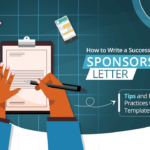
How to Write a Successful Event Sponsorship Letter: Tips and Best Practices with Templates

Top 5 IT Events from Q1 (Jan to Mar) 2023
Related posts, 15 types of b2b events that every event planner must know about, 17 ways to increase in-person event attendance rate in 2024, top 5 marketing events from q1 (jan to march 2024).
Comments are closed.
Alison Bensch
Senior director of global events, cloudinary, proudest of.
In both cases, we had to figure out how to take what are historically in-person events and translate them into engaging virtual experiences with a team of just two in-house event marketers, counting myself.
ImageCon is our flagship customer summit. In 2021, more than 1,700 people across 107 countries registered for the two-day event, which included 20 virtual sessions designed to help retailers unleash the full potential of their visual media.
Our hosted event series included about 8 virtual events across North America and EMEA markets. To drive up attendance and engagement, we hosted unique virtual cooking and mixology classes, wine tastings, tequila pairings, and more, with celebrity chefs and bartenders such as Marcus Samuelsson, Julio Cabrero, and Amanda Freitag.
Rockstar Mode
ImageCon was a success, in part, because we secured high-quality speakers and focused on providing true value to attendees by creating sessions to optimize their usage of the Cloudinary platform to improve their business. We featured customers in the content by doing customer spotlights. We also improved the production level of the summit by partnering with an agency.
I am proud we were able to pull off a high-quality event of this scale while managing 30 other events for the year.
Prior to the pandemic, our hosted event series consisted of in-person dinners and intimate happy hours. We wanted to recreate these virtually, without making them feel like webinars. We succeeded, in part, because we invested in high-quality talent to attract participants and create fun, memorable moments we probably could not have pulled off in-person.
We also took pains to make the events as easy as possible to attend, for example, by mailing guests meal kits or drink kits with everything they needed to participate. Of course, everything was branded, right down to the salt and pepper. We know our attendees’ time is precious, so we encouraged them to involve their family and were sure to include enough food and/or drink to share.
After the experience, we broke out into small groups, allowing people to network with peers and Cloudinary team members, who led discussions on relevant industry topics. Thus, attendees topped off a great culinary or cocktail experience with valuable learnings that could help their business. In fact, I see us continuing with some of these virtual events even after we have resumed in-person ones.
Our on-demand event content is now a powerful sales enablement tool for our sales team, who share session recordings with prospective customers, as well as existing ones who are considering adding on a new capability. We will continue to measure the performance of this content.
For the hosted events, we evaluate success by measuring pipeline acceleration. So, we consider where event guests are in their consideration process before attending the event. We use the event, and event follow-up, to help move the prospect or customer to the finish line. We usually see prospects who engaged in marketing campaigns were more likely to close, and close faster, than those who did not attend an event.
While this is harder to measure, we know our event series keeps the Cloudinary brand top of mind and deepens our relationship with customers. We document the positive feedback we receive from attendees and sales reps for internal use and marketing purposes.
Survivor Mode
Another challenge was creating an event strategy against a backdrop of so much uncertainty. I have seen industry colleagues invest resources in planning in-person events, only to have to rejigger in the final hour. I made the decision from the onset of the year to plan for virtual events, given our small team and resources. This allowed us to create more effective and engaging virtual events from the start and maximize our budget.
Nothing beats in-person events, and I am excited to be moving forward with these in 2022. But I plan to continue with digital and hybrid events, as well, for a number of reasons. When done right, they can be more memorable than in-person ones, and certainly more convenient. They also allow me to engage people across a wider geographic region (all of Europe for example or across the US), which leads to cost-savings and unique and widened interactions for our attendees.
Annie Yuzzi VP
Global corporate events and experiences, sumo logic, bethany roskin murphy, director of global events, drift, charlene kate ditch, founder, charlene kate events, gabrielle d., global events director, automation anywhere, gerilynn marburger, director, global events, hewlett packard enterprise, hollie ashby, senior manager, cxo and third party events, palo alto networks, lindsey cohen, director- event marketing, snyk, ceo & chief event strategist, liz king events, nicola kastner, vice president, global head of event strategy, sap, rachel russell, field marketing manager, even, samantha calle, associate director, xandr, margaret shaeffer, head of field marketing & events, linearb, traci depuy, head of global events, salesforce, dale rickert, global conference head of greentech festival, matthew lin, head of marketing, beetc, emilie watrob, head of event marketing, zs, katherine leong, director, corporate events, gainsight, sr. director, marketing technology (brand and events), salesforce, karim youssef, creative director, dpw, elizabeth thomas, head of global events, elastic, gerry schneider, vp events at wearedevelopers, director, global events at hewlett packard enterprise, mike kalyan, event and seminar marketing manager, shrm.

LOVE EVENTIBLE?
Disclaimer: If you choose to provide us with your email address or any other personally identifiable information, we will use it only to send you our newsletter or respond to your query.
- Call: +44(0)20 7226 1877
- Email: [email protected]
- My basket ({{$root.cartInfo.count}})
Q&A Techniques for a Perfect Question and Answer Session
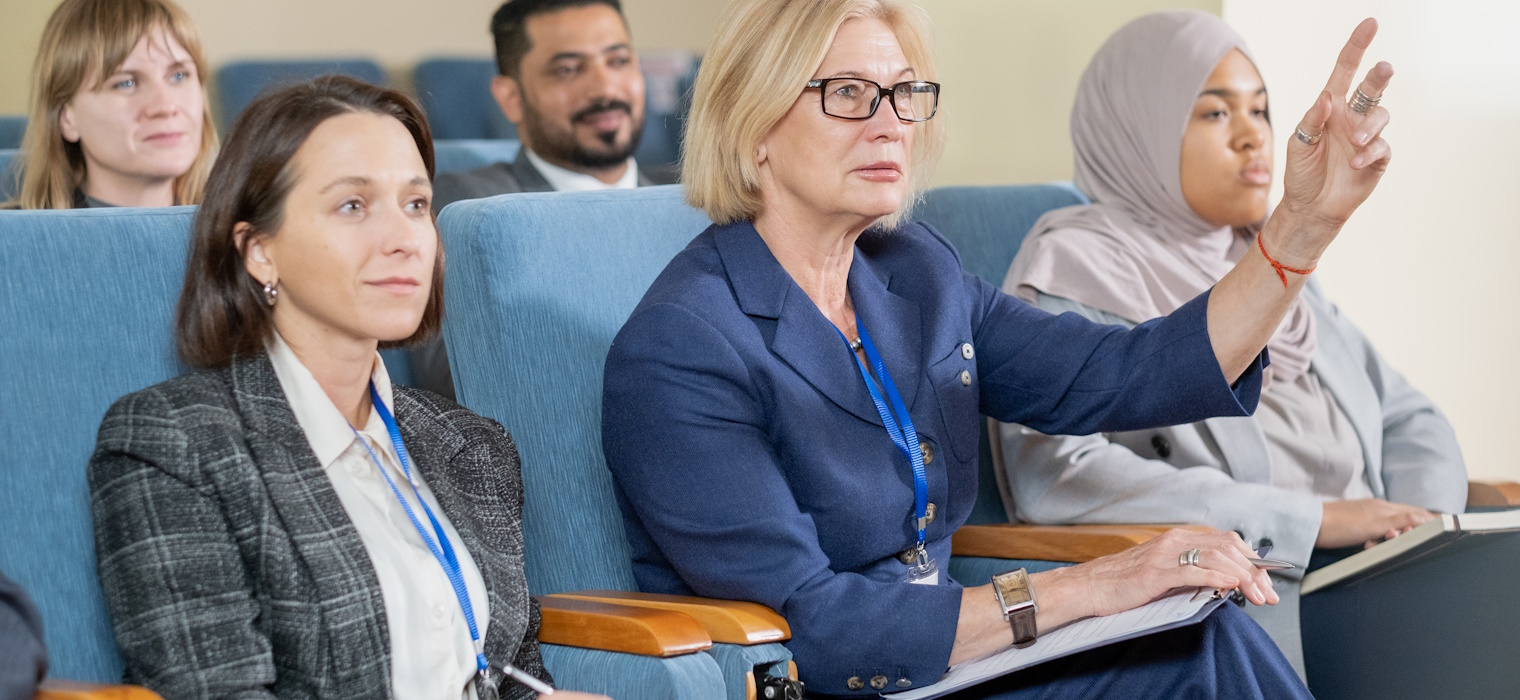
How to run ‘part two’ of your presentation for maximum audience engagement
Learn These Q&A Techniques for the Perfect Informal Question and Answer Session
There are many presentation techniques that enhance the value of your Q&A sessions, but the most important is to treat them as part two of your presentation and prepare as much as possible.
If part one is the formal delivery using speaker-support slides , then the Q&A is an informal follow-up session in which further content is delivered in the form of answers to questions. For example, clarifying points, going into further detail, and alleviating any concerns.
With that in mind, here are our top ten presentation techniques for preparing and hosting a perfect Q&A.
Give Advance Warning
A Q&A session with no questions can feel a little awkward, but there are presentation techniques you can use to encourage interaction. For example, if you provide advance warning of a Q&A session at the start of your presentation, then it encourages the audience to make mental notes about things they could ask.
Another presentation technique is to kick off the Q&A session by asking “Who has the first question?” This creates an expectation that there are questions out there and can encourage someone to put their hand up.
Treat Questions Equally
Avoid saying “Good question” as it infers you are grading audience members on the quality of their input. This can stifle questions from those who have more basic queries about something they didn’t quite understand. If they leave the room without clarification, then your presentation may not have achieved its objective.
Make it clear that all questions are welcome. If one really stands out, simply say “Thank you for asking that question.”
Repeat the Question for Everyone
Look at the person as they ask their question and then repeat it back the question to the whole room so everyone has the necessary context for your answer. This also gives the impression that the question was asked by the whole audience and provides an opportunity for the originator of the question to correct you if you misheard or misunderstood.
Before you answer, don’t forget to use another important presentation training technique – the well-timed pause .
Answer Questions to the Room
One of the most important presentation techniques is to address the entire audience with your answer so everyone benefits from the information. Equally, avoid the temptation to move towards the person who asked it. Continue to stand where you are so everyone in the audience feels equal.
Eye contact is another essential skill to learn. Check out our presentation tips on how to use the power of eye contact to enhance audience engagement .
Give Concise Answers
Lengthy responses can make the audience feel like they are back in the formal part of the presentation again. Always deliver answers as concisely as possible, but with enough detail to ensure everyone understands.
Bear in mind that the person asking the question may be the only one who wants to hear the answer. If you feel someone would benefit from further information, then suggest they come and see you after the Q&A.
Check Your Response
After delivering an answer, ask if it was satisfactory. This confirms you helped the person who asked the question and provides an opportunity for a follow-on question if time allows. However, never allow more than two questions in a row so the Q&A session remains a fair and balanced opportunity for everyone.
Kick Off with a Question Yourself
If no one has any questions, it can help to prepare a few of your own to get the ball rolling. For example, you could say:
“A question I’m often asked is…” or “You might be asking yourselves…”
Answer your own question, and then open the floor to others again. You can even strategically word your answer to raise a logical follow-on question.
Kicking off the Q&A session yourself shows you have passion for the subject, which is one of the seven laws of presentation skills .
Answering Loaded Questions
Loaded questions are one of the toughest challenges of Q&A sessions, but some simple presentation techniques can prevent them from derailing you or undermining your confidence .
The purpose of a loaded question is often to corner you into a specific answer that makes you look incorrect, morally wrong, or simply unprofessional. The person asking the question often has an agenda, and their aim may be to discredit you or what you are saying.
One of the best presentation techniques for this situation is to defuse the question first. For example, if someone asks
“What are you doing with all the money you make from the price increase?”
You could defuse it by saying that you understand their frustration. Then rephrase their question into a less emotionally charged format such as
“I believe what you’re asking is: why such a sudden price increase?”
If the person is unsatisfied with your rephrasing, it may be better to ask them to come and talk to you after the Q&A so you can address their concerns directly.
If a loaded question is off-topic, then don’t be afraid to politely say
“Actually, that question doesn’t quite fit the context of this discussion.”
Dealing With Speech Makers
Sometimes the person asking the question simply wishes to make a point. This is okay for short points, and you can simply thank them for their comment and move on to the next question.
Occasionally, you may encounter someone who wishes to make a speech themselves, but this is unfair to those who have genuine questions.
Presentation techniques for this situation include waiting for the speechmaker to pause or take a breath, and then interrupting with
“Thank you very much for your comment. Next question?”
Then quickly look to the other side of the room and point to the next person with a question. In most cases, the speech maker will be unsure whether you interrupted them deliberately or genuinely thought they had finished.
Prepare, But Be Prepared to Say “I Don’t Know”
Take time to prepare for both parts of your presentation. For the Q&A session, look at the content of your formal delivery and think about the questions it might raise. If your presentation feels comprehensive, it can even be useful to reduce the level of detail in one or two sections to make them logical areas to explore in the question & answer session.
Once you have anticipated questions, prepare concise answers but never use notes or slides to deliver them as you don’t want it to seem rehearsed. The audience may even think the person asking the question was planted by you.
Finally, it is perfectly acceptable to say that you don’t know the answer. Feel free to provide a useful opinion, but make sure the audience knows you are unsure. Alternatively, simply note down the question and say you will follow up with an answer.
If you have any anxieties about answering questions, we have many other presentation techniques to help you .
This article was originally contributed by Stephen D. Boyd
Question and Answer Techniques
Impact Factory runs
Open Presentation Skills Courses
Tailored Presentation Training
Five-Day Immersive Presentation With Impact Workshops
and personalised
One-to-One Presentation Coaching
for anyone who is interested in
Q&A Techniques
Related articles.

What Tools and Software to Use to Create the Best Work Presentations
- Presentation
Explore popular tools for different experience levels and budgets.

Mastering a Virtual Stage: How to Give Career Boosting Virtual Presentations
- Remote Working
Stay ahead of the crowd by mastering the art of virtual presentation.

Choosing a Presentation Skills Training Provider
A lot depends on selecting the right presentation skills training course provider.
Discuss your requirements
If you like what you've seen, please call us on +44 (0)20 7226 1877 or click the button below to contact us via our contact form.
Privacy Overview
How to give more persuasive presentations: A Q&A with Nancy Duarte
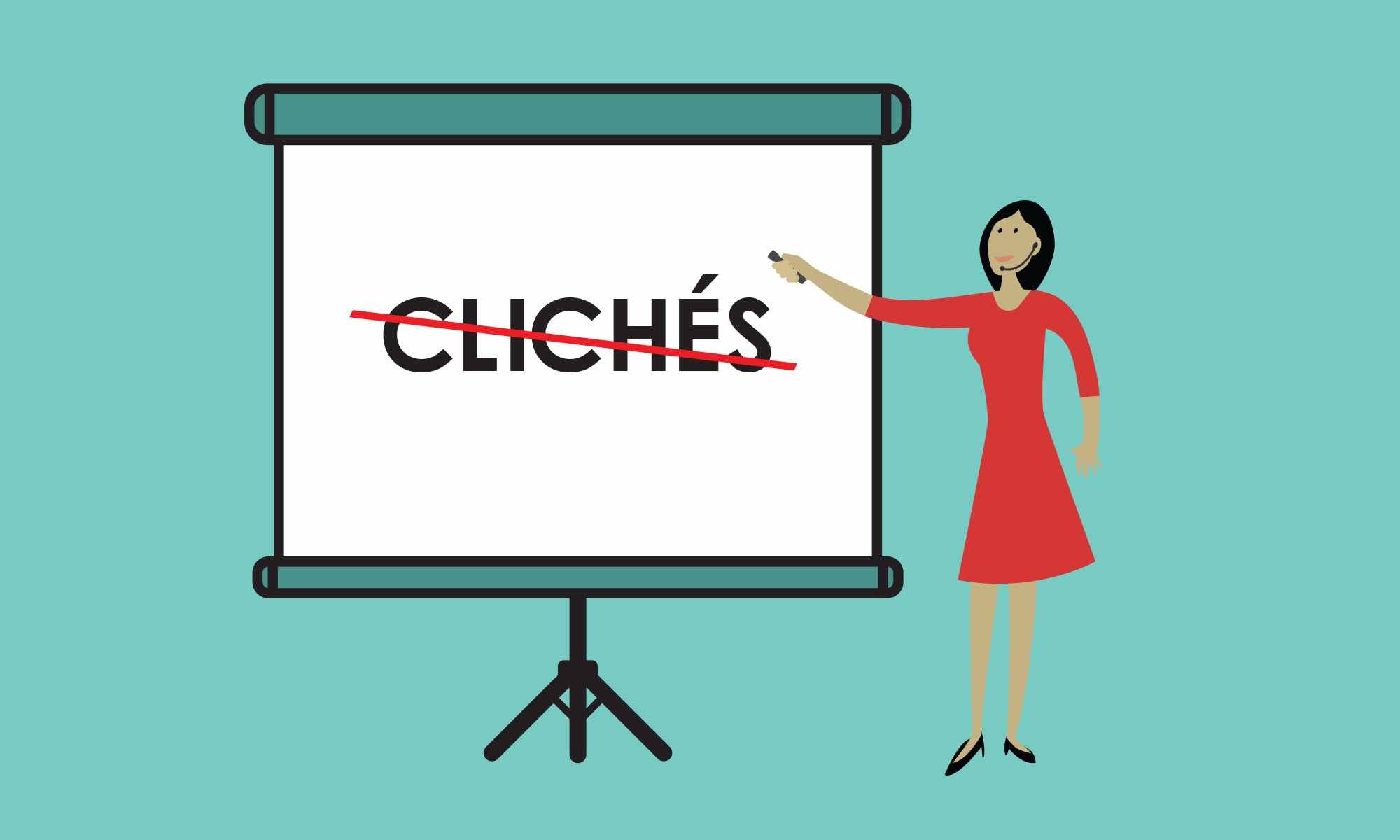
Stepping onto the TED or TEDx stage — or speaking in front of any group of people, for that matter — is truly nerve-wracking. Will you remember everything you wanted to say, or get so discombobulated that you skip over major points? Will the audience be receptive to your ideas, or will you notice a guy in row three nodding off to sleep?
Presentation expert Nancy Duarte , who gave the TED Talk “ The secret structure of great talks ,” has built her career helping people express their ideas in presentations. The author of Slide:ology and Resonate , Duarte has just released a new book through the Harvard Business Review: The HBR Guide to Persuasive Presentations .
What would you say are the three keys to giving a great presentation?
The number one thing, I think, is to be audience-centric. To take the time to think through who the audience is and develop all your material from a place of empathy toward them. You’re asking them to adopt your idea, which means they may have to abandon a belief they hold as true — and that’s hard. So, know your audience — take a walk in their shoes. What keeps them up at night? How are they wired to resist your message? Most presenters are consumed with preparing their content rapidly, which makes the material about their own narrow perspective. By flipping that paradigm to an audience-centric approach, your material will resonate and the audience can feel a deeper connection to you and your material.
Number two, you need to understand your role in the presentation. So many people feel like they’re the central figure — kind of like the hero of the story — because they’re the one talking the most. But in reality, your role is that of a mentor — you should be giving the audience a magical gift or a special tool, or helping them get unstuck in some way. You have to defer to your audience. When you put your idea out there for an audience to contend with — if they reject your idea, your idea will die. You have to think of it as, “The speaker needs the audience more than the audience needs the speaker.” Then you’ll start to approach a material with your audience in mind – you’ll have more of a stance of humility than one of arrogance. That will help you create the kind of movement needed to get your idea to spread.
And then the third thing — wrap your content in story. A story serves like the sugarcoating on the outside of a pill in some ways — it just makes it go down easier. If you look at preliterate generations for thousands and thousands of years, stories would pass down for generation after generation after generation — and stay almost completely intact. Yet, a lot of people can’t remember the last presentation they sat through. So, using principles of story — the tension and release that happens in a story — that’s what will help persuade the audience toward your idea.
What do you feel like you learned from giving your own TED Talk?
I learned so much. Being the “Presentation Lady,” I knew I couldn’t suck at it. The hardest part was getting [my talk] to fit within this finite amount of time. So I trimmed and trimmed, keeping in mind that you still have to nail why this is important to the audience. I had a person coach me and point out places where I could trim. “You took too long here, and that made this part of emphasis too long.” I worked with the timer counting up until I knew I was within the time window — then what I did was work with the timer counting down so I’d know, “When I’m a fourth of the way through, I should be on this slide. When I’m halfway through, I need to be on this slide.” I created markers in my mind so I would know how I was running on time. Sure enough, I finished the talk and I had six seconds left on the clock.
It was a great experience for me because I hadn’t gone through it myself. I’d coached people through it but — wow — to actually be a victim was interesting. I learned the power of rehearsing. If you rehearse really, really, really well — it looks improvisational. Some people rehearse to a point where they’re robotic, and they sound like they have memorized their presentation and didn’t take it to the next level. Going from sounding memorized and canned to sounding natural is a lot of work.
So, the classic advice for stage fright is to imagine the audience in their underwear. What do you recommend people do to calm their nerves?
I don’t usually get nervous, but when I got on [the TED] stage, I was nervous because it’s pretty high stakes. I recommend doing some breathing exercises — breathe in as deep as you can, and then take a couple more big gasps. Then, release it really slowly. That calms my heart down. But my favorite piece of advice isn’t my own — it’s from a guy named Nick Morgan. He said, “What you need to do right before you walk on stage is think of someone that you love dearly.” Doing that, I felt the chemistry in my whole body change. My shoulders relaxed and my heart melted. That feeling of affection makes your body calm itself down. That’s a really great way to stop stage fright.
What is the best way to start creating a presentation?
My best advice is to not start in PowerPoint. Presentation tools force you to think through information linearly, and you really need to start by thinking of the whole instead of the individual lines. I encourage people to use 3×5 note cards or sticky notes — write one idea per note. I tape mine up on the wall and then study them. Then I arrange them and rearrange them — just work and work until the structure feels sound. And from that sound structure, you start to fill it in using a presentation tool.
[For visuals], I think people tend to go with the easiest, fastest idea. Like, “I’m going to put a handshake in front of a globe to mean partnership!” Well, how many handshakes in front of a globe do we have to look at before we realize it’s a total cliche? Another common one — the arrow in the middle of a bullseye. Really? Everyone else is thinking that way. The slides themselves are supposed to be a mnemonic device for the audience so they can remember what you had to say. They’re not just a teleprompter for the speaker. A bullseye isn’t going to make anyone remember anything. Don’t go for the first idea. Think about the point you’re trying to make and brainstorm individual moments that you’re trying to emphasize. Think to the second, the third, the fourth idea — and by the time you get to about the tenth idea, those will be the more clever memorable things for the audience.
One thing that is really different about giving a TED Talk is the fact that you know it will be filmed. How do you think about the difference between live presentations and ones that will exist on video?
On stage, it feels really awkward to do large movements because — normally in life — we’re talking to someone in a more intimate setting and moving your arms really big feels melodramatic. But on the stage, you have to move your body in really big gestures. It feels awkward at first if you’re not used to it, so you have to kind of close your eyes and get used to it. Say things and move largely. Take big bold steps forward, big bold steps backward. You have this grand stage and people don’t use the space enough. I think one of the great things that Jill Bolte Taylor did was how she used her body. Her arms stretched all the way up when she talked about nirvana. Then she when she talks about her whole soul feeling constricted, she brings her hands down and folds her arms down in front of her. She’s using her body as a prop. That’s an important way to create meaning.
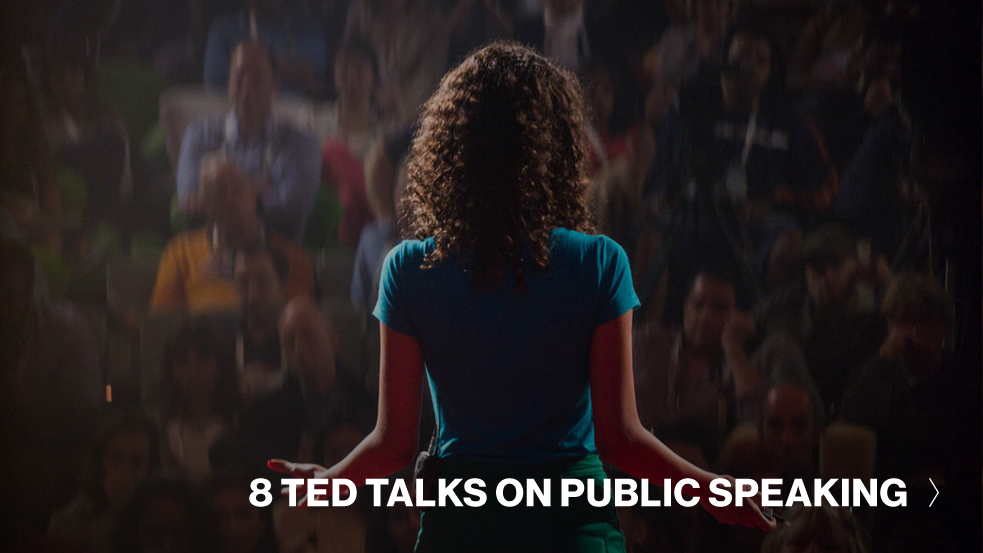
Also, with video, a tech rehearsal is important. Your audience on video is exponentially larger than the people in the room. So by familiarizing yourself with the cameras, you can at least look in that general direction. You know how you’re supposed to look around the audience — look and hold for five seconds, look and hold for five seconds? You should look at the camera as if it’s a human. Get used to seeing that circular lens as a face. Feel like it’s a person you’re talking to, because that audience on camera needs to feel like they’re there and that you’re looking right at them.
To me, presentations are the most powerful device. You can’t really name a movement that didn’t start with the spoken word. TED was once this exclusive, amazing event where ideas were exchanged, but you’ve moved to treating presentations as a media type. You guys have been so refined at it, that what it’s done is created a movement. What TED has done is made a platform for introverts, for scientists, for inventors — to share their ideas in a way that’s clear and appeals to a broad audience so that their ideas spread and get adopted. It’s completely changed how people present. It’s created this desire to be excellent in communication.
When you look at even how businesses communicated in the ’30’s, ’40’s and ’50’s — they were so much clearer and well-crafted. I recently went to the Stanford Library and I got a bunch of old GE Board meetings from, like, 1957. And I thought, “These are so beautiful!” Their presentations referenced history, they quoted things, they crafted their words in such a beautiful way. Then PowerPoint entered into the mix and suddenly there wasn’t any desire to craft anymore. I think TED Talks have brought the desire for the craft back.
Your new book is from the Harvard Business Review. Is it intended for someone who is in business, or for anyone?
All of my books are for anyone who has an idea that they need to communicate! I loved working with Harvard Business Review and I think because of the publisher, business professionals may be more interested in this book. But anyone with an idea can benefit from it. It’s a guidebook, so that people can think, “Oh, I need to know how to do this specific thing. I’m going to go get this book and find that one thing.”
Want more advice on giving talks? Our curator Chris Anderson is writing the official TED guide to public speaking —to be published by Houghton Mifflin Harcourt in spring 2016. Titled Talk This Way! , it will be packed with insights on what makes talks work.
- Subscribe to TED Blog by email
Comments (58)
Pingback: How to give a great speech (Hint: be authentic) « Broadside
Pingback: Before You Speak, Learn To See | Echo Hub » Posts
Pingback: Links of the Week: Week of Nov 5-11 « Creating Communication
Pingback: TED Blog | How to give a persuasive presentations: A Q&A with Nancy Duarte « Simpsonville New Home News
Pingback: TED Blog | How to give a persuasive presentations: A Q&A with Nancy Duarte « arnoneumann

6 Simple Ways to Handle a Q&A Session at a Conference
Conference presentations offer an ideal forum to share your work with other researchers and receive feedback. They can take many forms, including short or full papers, round-table or panel discussions, workshops, and poster presentations.
While organizing a conference , it is critical to prepare for a Q&A session that will accompany your presentation. Providing effective answers in your Q&A session will engage your audience, further demonstrate your expertise, and ensure that you leave a lasting impression. In today’s article, we will look at some ways you can make sure that you always have an effective Q&A session at every conference presentation you give.
What is a Q&A Session?
A Q&A session is generally a specific amount of time set aside at the end of your presentation for the audience to ask you questions directly. These may be about specific points that you addressed in your presentation, but they might also be about related research, recent news, or the background of your subject material. The toughest part is that you never quite know what to expect!
This may be one reason why even experienced presenters and researchers dread the Q&A portion of a presentation. But think of the Q&A session as a chance to engage with the audience and clarify anything your presentation may have skipped or touched on briefly. It is also a great way to hear new points of view and identify weaknesses or gaps in your work.
How to Hold an Effective Q&A Session
Fortunately, there are some pointers you can follow to make sure you have an effective Q&A session at any conference presentation . Here are a few tips to ensure your next Q&A session is a great one.
– Be prepared for some potential questions. When you work on your presentation, prepare for your Q&A session at the same time. Identify areas for potential questions based on your background research, and draft some answers in advance.
– Set time limit . The Q&A session doesn’t have to be a free for all! State clearly that this is the time for questions, and that time is limited . Don’t let people talk endlessly or give their own “mini-presentation”.
– Start the discussion. If asking for questions results in silence, you can ask and answer your own question to start things off. “One thing many people ask me is…” is a good way to begin. This also allows you to direct the flow.
– If you don’t know, say so . It can be nerve-wracking to stand on a stage and be asked a question you don’t know the answer to. But don’t worry! If you don’t know something, say it is beyond the scope of your research, or that you are still working on gathering enough data to be able to answer that question. It’s much better to say you don’t know than to try to fake your way through.
– Include the group . Don’t limit your answer on the person who asked it- you are presenting to a group. Paraphrase the question and shift your gaze to include the entire audience. This will keep others engaged.
– Validate dissent . If someone disagrees with you, don’t fight with them. Acknowledge them, and respond with something like “my research has produced different results” or “Thank you for your opinion. I know there are different schools of thought on this issue- let’s move on.”
Remember that this is an opportunity to share your research with interested people! Try to relax and have fun.
Do you have any other tips for giving effective Q&A sessions? What has worked for you? Let us know in the comments below!
Rate this article Cancel Reply
Your email address will not be published.

Enago Academy's Most Popular Articles

- Reporting Research
Academic Essay Writing Made Simple: 4 types and tips
The pen is mightier than the sword, they say, and nowhere is this more evident…
![q&a in presentation What is Academic Integrity and How to Uphold it [FREE CHECKLIST]](https://www.enago.com/academy/wp-content/uploads/2024/05/FeatureImages-59-210x136.png)
Ensuring Academic Integrity and Transparency in Academic Research: A comprehensive checklist for researchers
Academic integrity is the foundation upon which the credibility and value of scientific findings are…

- AI in Academia
AI vs. AI: How to detect image manipulation and avoid academic misconduct
The scientific community is facing a new frontier of controversy as artificial intelligence (AI) is…

- Diversity and Inclusion
Need for Diversifying Academic Curricula: Embracing missing voices and marginalized perspectives
In classrooms worldwide, a single narrative often dominates, leaving many students feeling lost. These stories,…

- Career Corner
- Trending Now
Recognizing the signs: A guide to overcoming academic burnout
As the sun set over the campus, casting long shadows through the library windows, Alex…
7 Steps of Writing an Excellent Academic Book Chapter
When Your Thesis Advisor Asks You to Quit
Virtual Defense: Top 5 Online Thesis Defense Tips

Sign-up to read more
Subscribe for free to get unrestricted access to all our resources on research writing and academic publishing including:
- 2000+ blog articles
- 50+ Webinars
- 10+ Expert podcasts
- 50+ Infographics
- 10+ Checklists
- Research Guides
We hate spam too. We promise to protect your privacy and never spam you.
- Speech Writing
- Delivery Techniques
- PowerPoint & Visuals
- Speaker Habits
- Speaker Resources

Speech Critiques
- Book Reviews
- Browse Articles
- ALL Articles
- Learn About Us
- About Six Minutes
- Meet Our Authors
- Write for Us
- Advertise With Us
Leading the Perfect Q&A
A great Q&A session – one that adds value to your presentation – requires planning and thoughtful contributions from both the audience and the speaker.
Q&A from Audience Perspective
From the perspective of audience members, Gretchen Rubin offers ten tips for asking questions from the audience :
Wait for the microphone, if there is one. Pause for silence – don’t talk over a chattering crowd. Don’t make excuses for yourself. This is tiresome and unnecessary. Don’t address speakers by their first names. Some people will disagree with me, I’m sure, but this always strikes me as affected and inappropriately familiar, unless the mood of the presentation is extremely casual. Don’t be long-winded. Plan it out. This will help you avoid being long-winded. Don’t ask double question. Give other people a chance. If appropriate, say a little about yourself. Just a little. Speak up. Nothing’s more frustrating to the audience than not being able to hear a question. Remember: you’ll be happy that you asked a question. I’m one of those people who rarely asks a question at such an occasion. I never spoke in class in law school. But whenever I do participate, I feel more engaged and enjoy myself more. I’m working on speaking up.
Though it isn’t always the case, let’s assume that your audience has read and followed Ms. Rubin’s excellent advice. If so, then the audience will fulfill their half of the Q&A contract. What can you do as a speaker to ensure a great Q&A?
Before the Q&A
- Plan for a Q&A. Too often, speakers fill their entire allotted time with their (formal) presentation. The consequence is that the Q&A session either doesn’t happen (everyone loses) or it is forced to run overtime (audience members may be hungry, irritated, or have to leave). Budget for the Q&A when you plan the presentation. Cut material as necessary to ensure you allow time for the Q&A.
- Be prepared. Anticipate the questions that will be asked. Look at your presentation objectively, and use your audience analysis to predict their questions. When appropriate, prepare a few “extra” slides (perhaps the ones that you cut out of your final formal presentation) that will assist in addressing questions during the Q&A. If you have presented the material before, the questions you have received in the past are likely to come up again if you have not altered the core presentation.
- Announce the Q&A. Some speakers welcome questions throughout a presentation; most speakers, however, prefer to handle questions near the end. If you fall into the latter group, don’t leave your audience wondering if there will be a Q&A. Announce this early, and you will accomplish two things: (1) Your audience is reassured that they will have a chance to pose questions and (2) Your audience is encouraged to start thinking of questions.
- Encourage questions. When you announce the Q&A session, be positive. “I look forward to addressing your questions” rather than “At 10:45, we’ll have the obligatory fifteen minutes for questions.” At certain points in your presentation, you may also want to encourage questions. “Does anyone have any questions about this process?” or “If anyone has questions or comments about this process, please bring them forward in the Q&A session.”
“ Budget for the Q&A when you plan the presentation. Cut material as necessary to ensure you allow time for the Q&A. ”
During the Q&A
- Restate the question, perhaps in your own words. Doing this provides two benefits. First, you increase the likelihood that the audience has heard the question. Second, you increase the likelihood that you understand the question before you proceed to answer it.
- Don’t assume everyone in your audience has the same background knowledge about the question that you do. No audience member wants to hear a response like “Yes, John, the ___ strategy would be appropriate for a company like yours because…” if they don’t know which company is being referred to or what kind of company it is. Share any contextual knowledge you have so that the audience better understands the question as well as your answer. A better alternative would be “[setting the context] John is the CEO of Frodo Solutions, a consulting company which helps small businesses with ___. [now, addressing the question] Yes, John, the ___ strategy would be appropriate for a company like yours because…”
- Give your full attention to the person asking the question. Show them professional courtesy by listening to their entire question before beginning your response. If you interrupt, the message you are sending is “I’m not really interested in your question. I’m more interested in talking…”
- Keep the questions on topic. Too often, presenters will say “This is getting off topic, but the answer is…” and then proceed to bore most of the audience. It is better to say “That’s a great question, but a little off topic. Let’s discuss that offline.” Use the same approach if you are asked a question that would just take too long to adequately answer within the time allotted.
- Don’t let a single person dominate the Q&A. Maybe they are a heckler with an intent to disrupt, or maybe they just feel that all of their questions need to be given priority. In either case, be assertive and deflect their questions offline. Give other audience members a chance to ask their questions.
- Be truthful. If you don’t know the answer, then say you don’t know the answer. Don’t lie. Don’t mislead. Don’t tap dance around the question for two minutes giving your sales pitch without ever addressing the question. Don’t risk your integrity to avoid embarrassment. Acknowledge that you don’t know the answer. Consider asking your audience if anyone has the answer.
After the Q&A
- Invite follow-up questions. Stick around after your presentation, or make yourself available at a later time. Provide contact information. Your goal is to leave no question unanswered.
- Don’t end your presentation with your last Q&A response. This is generally a weak conclusion, especially if the last question/answer was negative or neutral. Save your concluding words (and perhaps your final slides) for after the formal Q&A.
Some speaking opportunities do not allow for a full Q&A session (e.g. the 60-second elevator pitch). However, the majority of presentations are enhanced by the inclusion of a productive Q&A session. Do your part, and trust that the audience will do theirs.
What have I missed? Please share your tips for leading a great Q&A session. 🙂
Other Q&A Resources
- David Greenberg: How to Master the Question-And-Answer Session
- Speaker’s Bank: Top 10 Tips for Handling a Question and Answer Session
Please share this...
This is one of many public speaking articles featured on Six Minutes . Subscribe to Six Minutes for free to receive future articles.
Image credit: lusi
Add a Comment Cancel reply
E-Mail (hidden)
Subscribe - It's Free!
Similar articles you may like....
- Q&A Tips from Toastmasters International President
- 10 Phrases Savvy Speakers Never Say
- How to Manage 8 Tough Personas in a Group Discussion
- How to Lead a Discussion Group
- How to Plan a Great Group Discussion
- How to Ace the Impromptu Speech
Find More Articles Tagged:
Love your Q&A tips. It would be extremely useful for training sessions too. Keep it up Andrew!
Yes, these tips apply to many “audience interaction” or “audience participation” scenarios.
Great information! Your point “Don’t end your presentation with your last Q&A response” – is one I stress to new leaders.
Again, thanks for the tips.
Excellent tips here, Andrew.
Here are two more: 1. Prime the pump! Sometimes no one wants to be the first to ask a question, so ask the first one yourself! Say, “One of the questions I’m typically asked is. “…”
2. When starting the Q&A, don’t say, “Do you have any questions?” Some may interpret that statement to mean they weren’t listening or didn’t understand the message. Better to say, while raising your hand high in the air, “What questions to you have for me?”
Thanks for the Post!
You can also provide index cards for audience members so they may write down their questions as they come up and suggest that they provide their contact information so you can answer them in the event time does not permit during your session.
Recent Tweets
RT @dnewman: Tips for leading the perfect Q&A: http://bit.ly/bhKgRX #speaking — Samuel Jay Smith Sep 30th, 2010
RT @dnewman: Tips for leading the perfect Q&A: http://bit.ly/bhKgRX #speaking — Sean V. Bradley Oct 1st, 2010
RT @dnewman Tips for leading the perfect Q&A: http://bit.ly/bhKgRX #speaking — J D Ebberly Oct 9th, 2010
RT @JDEbberly: RT @dnewman Tips for leading the perfect Q&A: http://bit.ly/bhKgRX #speaking — Kevin Loker Oct 9th, 2010
RT @dnewman: Tips for leading the perfect Q&A: http://bit.ly/bhKgRX #speaking — Stephanie Scotti Oct 12th, 2010
RT @dnewman: Tips for leading the perfect Q&A: http://bit.ly/bhKgRX #speaking — KarlaScott Oct 12th, 2010
Tips for leading the perfect Q&A: http://bit.ly/bhKgRX #speaking — David Newman Nov 30th, 2010
Speakers: Leading the Perfect Q&A http://t.co/tLFfpCDU via @6minutes — Fred E. Miller Dec 14th, 2011
Speakers: Leading the Perfect Q&A http://t.co/tLFfpCDU via @6minutes — Sheldon J Harber CFP Dec 14th, 2011
Leading the Perfect Q&A http://t.co/lhWwixd1Uf via @6minutes — @tgillihan Aug 24th, 2015
5 Blog Links
The Public Speaking Blog » You At The Back. Yes, You… (How Do You Manage An Effective Q & A Session?) — Feb 14th, 2008
8 tips for encouraging questions in your presentation : Speaking about Presenting — Nov 26th, 2008
The 25 Essential Presentation Skills for Public Speaking | David Edgerton Jr — May 6th, 2010
10 Ways Your Presentation Skills Generate Career Promotions | www.inextworld.com — May 26th, 2012
How to Handle Questions during your Presentation | Moving People to Action — Mar 25th, 2013
Featured Articles
- Majora Carter (TED, 2006) Energy, Passion, Speaking Rate
- Hans Rosling (TED, 2006) 6 Techniques to Present Data
- J.A. Gamache (Toastmasters, 2007) Gestures, Prop, Writing
- Steve Jobs (Stanford, 2005) Figures of speech, rule of three
- Al Gore (TED, 2006) Humor, audience interaction
- Dick Hardt (OSCON, 2005) Lessig Method of Presentation
Books We Recommend
Six Minutes Copyright © 2007-2022 All Rights Reserved.
Read our permissions policy , privacy policy , or disclosure policy .
Comments? Questions? Contact us .
how to give the perfect presentation
Giving a presentation – q & a strategies, how to use the q & a session to your advantage.
Most presentations include a short question and answer session, which is a positive way to invite the interaction of your audience. During your introduction, inform the audience when they may ask questions. You may choose to accept questions throughout your presentation or at the end. Answering questions from the audience can help you to summarize the information, stress your main points, clarify any misunderstandings and reinforce your recommendations. More important, it can make you more likable, allow you to connect at an informal level with your audience, and enable you to maintain your leader/expert role.
Answering Different Types of Questions
Questions from the audience tend to fall into three categories: good questions, difficult questions, and unnecessary questions. Making a comment about the question before you begin the answer will give you some time to think.
From your point of view as a speaker, good questions enable you to reinforce and elaborate on your message to the audience. You could begin your response by saying, “That’s an excellent question.” Difficult questions are those which are confrontational. They are designed to embarrass you, challenge you, confuse you or discredit you. If you don’t know the answer, you might say, “I’m afraid I don’t have that information with me.” If you prefer not to answer, you could say, “I’m afraid I’m not in a position to comment on that.” Unnecessary or irrelevant questions are those which ask about information you have already given. Point this out by saying something like “I think I answered that earlier.”
Staying in Control
Your objective is to maintain as much control of the question-and-answer session as you did of the formal presentation. You are the one who decides how many people to call on. You are the one who chooses how much detail to provide in your response. You are also the one who signals when the question-and-answer session comes to an end.
Start by listening carefully to the question and nod to show that you understand and are paying attention. Be patient if the questioner asks you to clarify something that you have already explained at depth during your presentation. Even though you may feel you explained this point clearly, there may be some misunderstanding among audience members. Don’t roll your eyes or sigh in exasperation when you hear a question. These are insulting signals. Instead, after the questioner has finished speaking, say you’ll be happy to clarify the point. Otherwise, explain politely that you have already done so.
Always repeat the question. This has several benefits. First, it brings the attention of the audience back to you, rather than the person asking the question. Second, in a large room, the question may not have been heard by everyone. Your repeating it allows each person to know what you are going to talk about. Third, it gives you time to think of how to answer. Remember to stay on track and answer the specific question. If one person tries to ask several questions, explain that you could speak privately afterwards but for now, you’d like to give more people a chance to ask questions.
Maintaining Visual Control
- Adopt a comfortable position, where you can look at all sections of the audience.
- Use eye contact techniques.
- Use walking patterns to focus and refocus the attention of the audience.
Maintaining Verbal Control
- View the question and answer period as an opportunity to reinforce your major points.
- Listen to the intent of the message, instead of the tone.
- Keep your answers brief so as not to appear to be defending yourself.
Remember that a speaker is judged from the moment he or she enters the room until the last question is answered, so be polite, helpful and professional in answering questions.
At times, I’ve faced difficult technical questions after a presentation for which I have no answers.
What can I do to avoid losing my credibility if I HAVE NO ANSWERS!!??
There are many things you can do:
Tell the person you do not have the information available at this time, but will get back to him / her with it as soon as you get it. Then, make sure you do.
Explain that you are not the technical expert but that you will provide the contact info for the right person.
Answer part of the question and ignore the rest.
Explain that the question will take time to answer, so you will get back to him / her by email later.
About Presentation Prep

Being able to speak in public can change your life! Presentation Prep is your complete, free guide to delivering speeches, lectures, and presentations more successfully and confidently. Whether you're a native English-speaker who suffers from public speaking anxiety, or a non-native speaker who needs guidelines for presenting to international audiences, this site will give you everything you need. Presentation Prep is written by Rebecca Ezekiel, an experienced corporate trainer who specializes in the areas of communications, presentations, and cross-cultural skills. Her online English language training videos are watched by millions of students worldwide.
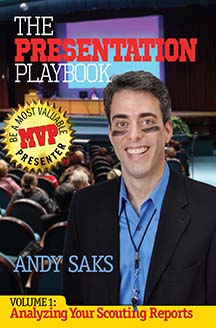
NOW AVAILABLE! The Presentation Playbook Series
- Trade Show Presenter
- Testimonials
- Trade Show Staffing
- Sample Videos
- Seminar Speaker
Spark's Presentation & Public Speaking Blog
- 7 Tips to Encourage Audience Questions in Your Presentation Q&A
September 19, 2017
Ever seen a presenter ask “Any questions?” at the end of their presentation, and heard only crickets from the audience?
In my work as a professional emcee and trade show presenter , I see it often, and it always makes me cringe because it’s so awkward, and so completely avoidable.
Asking for questions and getting none kills a presentation’s momentum. It usually goes like this:
- The presenter, having run out of content, asks “Any questions?”
- The audience, having no questions, freezes in place.
- Everyone thinks they hear crickets, though there are none in the room.
- The presenter, getting no questions, says, “OK, I guess I’m done.”
OUCH. How’d that happen?
Chances are, you caught your audience by surprise. They didn’t know you’d take questions, so they didn’t think of any. When you asked, you caught them off guard.
I want your next presentation to end with a bang, not a whimper. So try these tips to encourage questions:
1. PREPPING YOUR Q&A: PRIME YOUR AUDIENCE
> TIP THEM OFF EARLY: As you start your presentation, tell your audience: “I’ll take all your questions at the end, so write down your questions as you think of them along the way.” That’ll get them active thinking of questions throughout your presentation.
> REMIND THEM: A few minutes before you take questions, say: “I’ve got one more slide to cover, then I’ll take your questions.” That’ll remind them to think of some questions if they haven’t yet.
2. STARTING YOUR Q&A: GIVE THEM A NUDGE
> LEAVE ROOM: Starting a Q&A with little or no time left discourages questions; your audience wants to leave on time too! Instead, carve out 5-10 minutes or more for questions (and cut some content to make room if needed; your audience prioritizes the information they want to get over the information you want to share).
> USE A PLANT: Have a “plant” in the audience who’ll ask the first question (one you’re comfortable answering), which encourages other audience members to ask (and saves them the awkwardness of going first) and gives them time to think of something to ask.
> CHANGE YOUR PHRASING: Your audience may interpret the phrase “Any questions?” as a sign that you don’t expect or even want questions, which discourages them from asking. Instead, encourage questions by phrasing your question with a more upbeat, expectant tone: “Who’s got a question?” or “Who’d like to go first?”
> ASK IT YOURSELF: Ask yourself a common question: “One question I get often is…” Then answer it. Again, this encourages the audience to follow suit, and gives them more time to think of a question.
3. ENDING YOUR Q&A: ADD THAT BANG!
Q&A or not, ending your presentation by saying you’re ending your presentation (“OK, I guess I’m done”) will end your presentation with a whimper. You can easily replace that whimper with a “bang” by restating your main takeaway and thanking your audience:
“Folks, I hope my presentation has shown you that when it’s raining and you want to stay dry outside, use an umbrella! You won’t regret it. Thanks so much for your time.”
And thank you so much for your time!
by Andy Saks
Posted in: Sparky Says: Presentation & Public Speaking Tips | No Comments
Add your comment
Leave a Reply Cancel reply
Your email address will not be published. Required fields are marked *
Save my name, email, and website in this browser for the next time I comment.
Notify me of follow-up comments by email.
Notify me of new posts by email.
Search Spark’s Blog
Spark news: coming (& recent) attractions.
- Spark booth presenter shines at Las Vegas tech show
- Navy SEAL fundraiser books charity auctioneer Andy Saks
- Boston awards event books Spark master of ceremonies
- Read all Coming (& Recent) Attractions
Sparky Says: Presentation & Public Speaking Tips
- 10 Tips to Boost Donations at Your Fund the Need / Paddle Raise
- 10 PowerPoint Alternatives That Make Your Presentation Memorable
- Read all Sparky Says (Speaking Tips)
Presentation Frequently Asked Questions
- Trade show presenter 101: Your guide to booking a booth presenter (Part 1)
- Sales presentation skills: How much is your pitch actually worth?
- How do I hire the right trade show presenter?
- Read all Presentation FAQ
Spark's Client Success Stories
- Emcee tips: How Spark’s master of ceremonies made AT&T’s awards dinner fun
- Trade show booth ideas: How to get the most value from your presenter
- Trade show booth ideas: Recycle your presentation script
- Read all Spark Success Stories
Spark Presentations
Andy Saks, Owner & Lead Speaker
781-454-7600 | Email | Contact page
Don't miss exclusive Spark deals! Sign up for your Spark e-newsletter today.
Newly Launched - World's Most Advanced AI Powered Platform to Generate Stunning Presentations that are Editable in PowerPoint

Researched by Consultants from Top-Tier Management Companies

Powerpoint Templates
Icon Bundle
Kpi Dashboard
Professional
Business Plans
Swot Analysis
Gantt Chart
Business Proposal
Marketing Plan
Project Management
Business Case
Business Model
Cyber Security
Business PPT
Digital Marketing
Digital Transformation
Human Resources
Product Management
Artificial Intelligence
Company Profile
Acknowledgement PPT
PPT Presentation
Reports Brochures
One Page Pitch
Interview PPT
All Categories
Must-Have Q&A Slide Templates with Samples and Examples
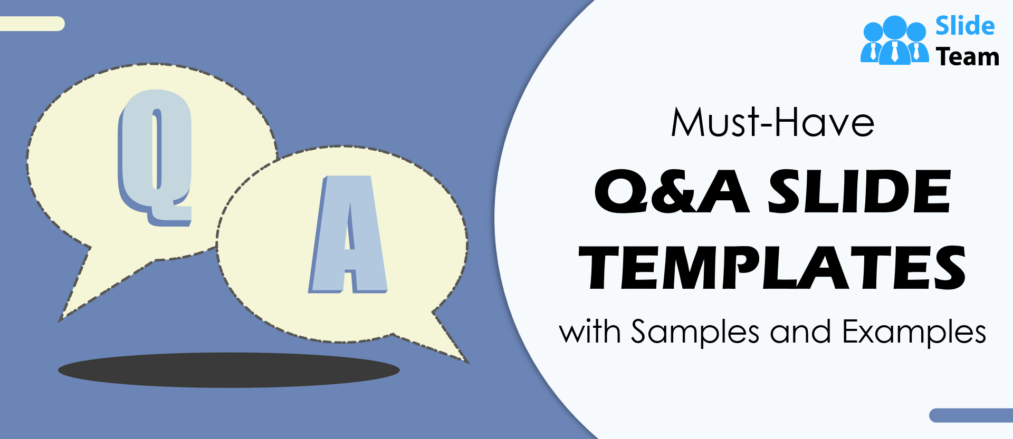
Simran Shekhawat
“The power to question is the basis of all human progress."
– Indira Gandhi.
How beautifully the late Prime Minister of India has put it - the power to frame and ask questions is a step that starts with curiosity and ends with progress. The system or procedure of designing and performing a question-and-answer session is essential to learning.
We inquire about things to learn more about them and respond to inquiries to share more details. We ask and respond to questions to be courteous and to establish and sustain connections. Asking and responding to questions is not only a component of how we learn but also a part of our social skills. The answer to any problem is to ask questions. Asking the proper questions is frequently the first step in seeking solutions when faced with difficulties or doubts.
In turn, solutions offer knowledge and direction for successfully resolving issues. Answers offer justifications that can improve understanding sessions and aid in effective communication in various contexts, such as talks, interviews, and presentations. They enable people to communicate ideas, impart knowledge, and interact with others in a planned way.
Learn how feedbacks are successful in determining business market trends. Click here!
To effectively provide insights into the business challenges that your company must face, we have devised excellent q&a slide templates that give you the flexibility to frame your questions and change the icons, images, or patterns per your business norms. It is customizable, editable and content-ready. You are just a step away from getting your solutions. Check out these brilliant templates now.
Conduct your event survey with the help of this template. Click Here!
Devise effective sales call strategies by checking out this impeccable template. Check Now!
Let’s start to choose Q&A slide templates for you.
Template 1 – image of q and a with added text.
Imagine a PPT Template that is efficient enough to provide you the flexibility to add and edit questions of your choices to determine the solutions you seek. Grab this simple yet compelling question-and-answer template, allowing participants to contribute to conversations and express their opinions. Businesses, marketers, policymakers, and stakeholders can utilize this template to know the most about the company. Use this template to determine your next big move!
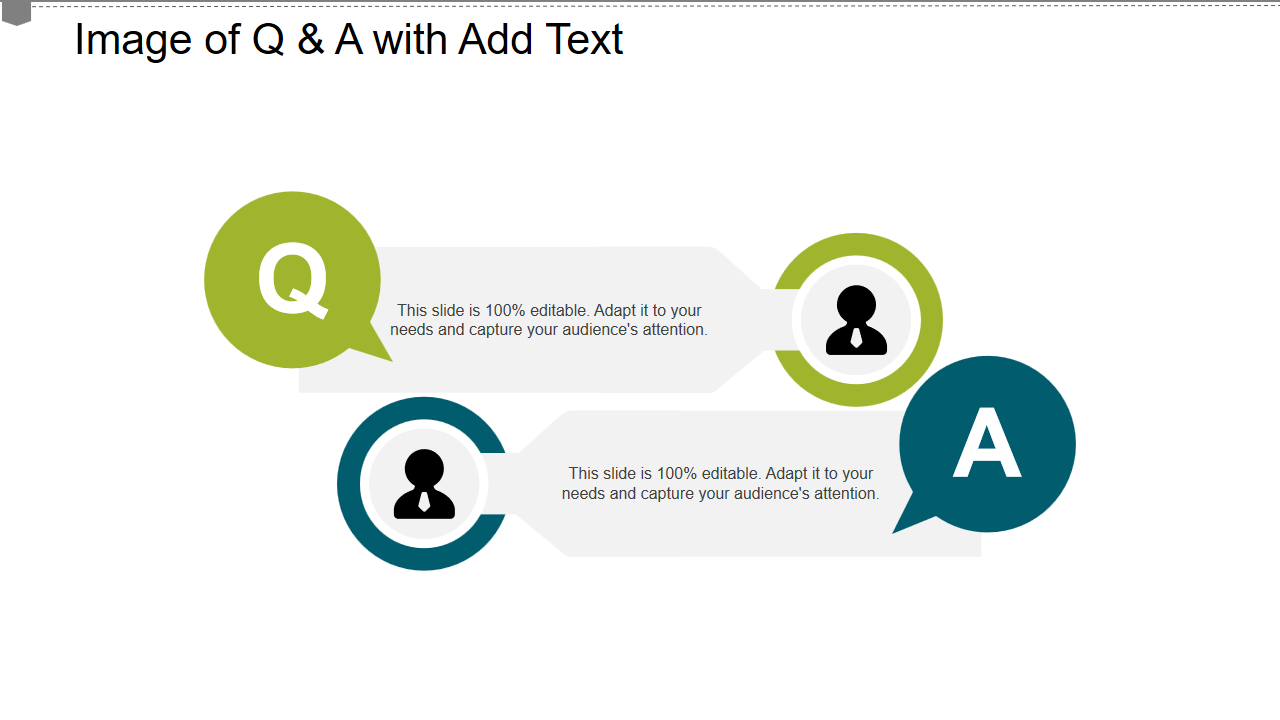
Download Now!
Template 2 – Q and A Discussion in Recruitment Process Icon
Here's an exclusive template slide for a proper recruitment process that makes the recruitment process easy in no time. The Q&A layout is an essential component of the hiring procedure since it promotes transparency and guarantees that candidates and the company can confidently make decisions regarding possible employment. With this template slide, the recruitment team can better comprehend the candidate's personality and ability to dedicate his efforts toward the business. Use this presentation template to rate the personality of the candidate. Analyze the responses gathered to determine their position in the company.
Click Here!
Template 3 – Image of Q and A with a Thank You
This is a template that is creative yet effective in demonstrating its effectivity where you can out questions that are more important than answers because questions seek to understand clarity and frame and evaluate. In contrast, at their best, answers are temporary responses whose relative quality can decay with time. Update and frame your questions here to seek out the best possible answer. This template is designed to identify the audience's perceptions of certain specific questions. You can use this template in business meetings, conferences, or events to welcome reviews or feedback for any particular event. The template looks stunning with its 'Thank You text appearing at the corner to determine an interactive session.
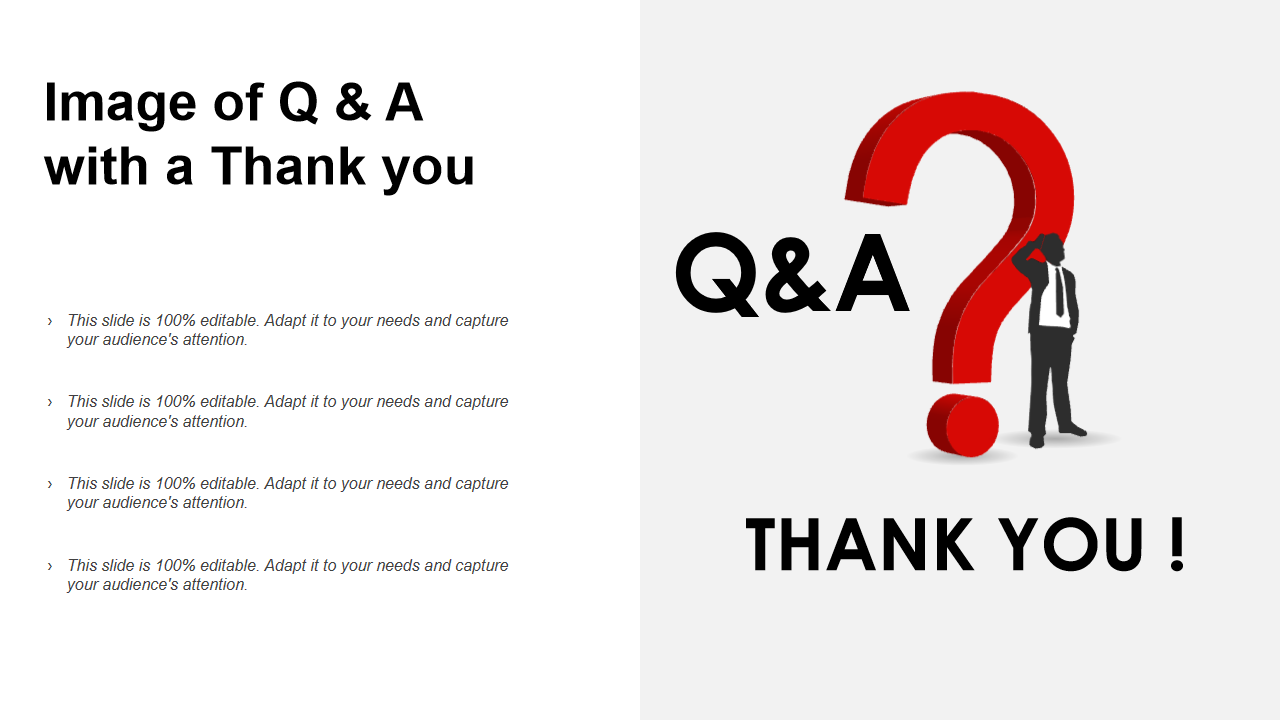
Template 4 – Q and A icon with two persons
Establish a three–tier stage process for a practical question and answer session round. This template enables you to edit icons and design features as needed. Educational institutions, events workshops conducting programmers, and businesses can utilize this template to analyze the outcome of an event through the course of this three–tier effective template structure where you can comprehend the answers to specific questions, understand communication skills and practical cognitive abilities which includes their thinking, decision making, and problem-solving capabilities.
Questions and Answers; a path towards progression
Asking the proper questions has always led to revolutionary inventions and discoveries throughout history. Inquiries pique people's curiosity and creativity, inspiring them to explore new possibilities. Question and answer exchanges in a professional setting help with ongoing progress. They offer input and knowledge that can result in better procedures, goods, and services. Understanding the importance of Questions and answers SlideTeam has devised various attractive Q and A templates that helps business to formulate, design and analyze their next big move for their companies. These templates are 100% customizable editable and as per the requirements of the situations. Download Now!
FAQS on Q&A
1. what is q&a.
Q&A is a word that stands for "Questions and Answers." It describes a style or manner of communication in which individuals or groups converse by asking questions and receiving answers. Q&A sessions are frequently used to acquire data, spread knowledge, and interact with a crowd. Based on the situation, they may be formal or informal.
2. What is the complete form of the word Q&A?
The complete form of the word Q&A is Question and Answer.
3. How do Q&As Work
A Q&A session's common goals include knowledge sharing, information gathering, doubt clarification, and audience interaction. Here's how a Q&A works.
- Setting questions based on the context - A questioner or participants are one or more people who inquire about the subject. These inquiries might be planned or made up on the spot. Before or during the Q&A session, questions may occasionally be submitted in writing or online.
- Answering - The questions are answered by another person or group of people, frequently an expert, panelist, speaker, or interviewee. Answers are the name given to these responses. Depending on the Q&A session's format, answers may be given orally, in writing, or in another way.
- Interaction - Q&A sessions involve an engaging back-and-forth of questions and responses. Based on the responses, participants may ask for clarification or more information. The level of engagement can vary from a straightforward question-and-answer style to more extended conversations and arguments.
- Conclusion - The Q&A session usually concludes after the allotted time has passed or when the moderator or organizer decides to do so.
- The session may be concluded with a summary or closing remarks.
- Documentation - Depending on the circumstance, Q&A sessions might be filmed, typed down, or preserved for dissemination or later use.
4. What is online Q&A?
Online Q&A is a form of participation and interaction in which individuals or groups address questions through digital platforms, and responses or answers are then given. Through websites, forums, social media, email, live chats, and other internet-based communication tools, online Q&A can be enabled in various ways.
Related posts:
- Top 10 Training Survey Templates with Samples and Examples
- Top 10 Feedback Form Templates with Samples and Examples
- Top 10 Product Satisfaction Survey Templates with Samples and Examples
- Top 7 Training Scorecard Templates with Samples and Examples
Liked this blog? Please recommend us

10 Key Elements to Include in Your Marketing Business Plan (Free PPT)
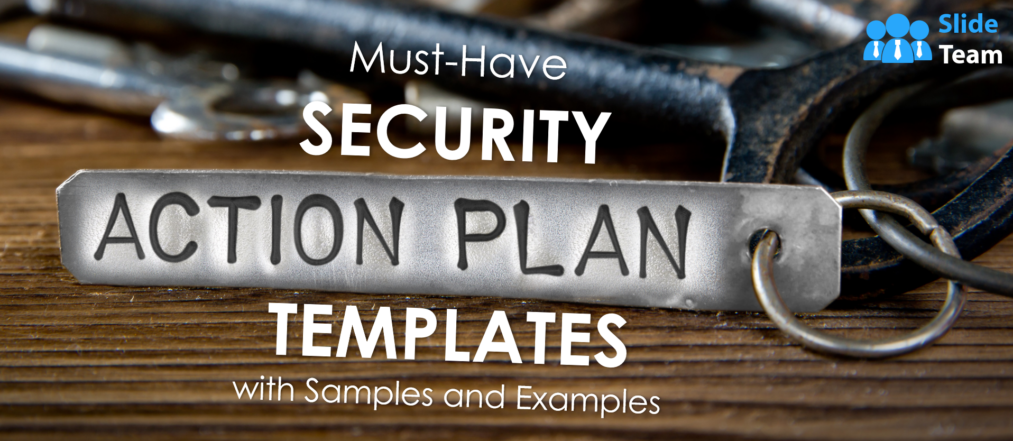
Must-Have Security Action Plan Templates with Samples and Examples
This form is protected by reCAPTCHA - the Google Privacy Policy and Terms of Service apply.

Digital revolution powerpoint presentation slides

Sales funnel results presentation layouts
3d men joinning circular jigsaw puzzles ppt graphics icons

Business Strategic Planning Template For Organizations Powerpoint Presentation Slides

Future plan powerpoint template slide

Project Management Team Powerpoint Presentation Slides

Brand marketing powerpoint presentation slides

Launching a new service powerpoint presentation with slides go to market

Agenda powerpoint slide show

Four key metrics donut chart with percentage

Engineering and technology ppt inspiration example introduction continuous process improvement

Meet our team representing in circular format

- Affiliate Program

- UNITED STATES
- 台灣 (TAIWAN)
- TÜRKIYE (TURKEY)
- Academic Editing Services
- - Research Paper
- - Journal Manuscript
- - Dissertation
- - College & University Assignments
- Admissions Editing Services
- - Application Essay
- - Personal Statement
- - Recommendation Letter
- - Cover Letter
- - CV/Resume
- Business Editing Services
- - Business Documents
- - Report & Brochure
- - Website & Blog
- Writer Editing Services
- - Script & Screenplay
- Our Editors
- Client Reviews
- Editing & Proofreading Prices
- Wordvice Points
- Partner Discount
- Plagiarism Checker
- APA Citation Generator
- MLA Citation Generator
- Chicago Citation Generator
- Vancouver Citation Generator
- - APA Style
- - MLA Style
- - Chicago Style
- - Vancouver Style
- Writing & Editing Guide
- Academic Resources
- Admissions Resources
How to Handle Research Presentation Q&A Sessions
Answering Research Presentation Questions Effectively
Dealing with questions from audience members can be one of the most difficult aspects of presenting your research. In addition to the pressure of speaking in front of a crowd of your academic peers, presentation questions can often be difficult to answer for a number of reasons: communication difficulties, lack of information, inability to understand the exact question, or even difficulty hearing the speaker. Even if you know your research topic inside and out, these questions can cause a lot of frustration for even the best researchers.
But that doesn’t mean you can’t prepare for the Q&A session and make it a productive part of your presentation. The following guidelines provide a comprehensive approach to answering questions you are likely to encounter during your research presentations and give you some simple advice on how to respond to these difficult questions and awkward situations.
Before Your Research Presentation
Before you even give your presentation, there are some basic strategies you can use to make sure you are not caught off guard by any questions you will be asked.
Create a list of the possible presentation questions you will be asked
Imagine you are a fellow researcher sitting in the audience. Which questions would you ask about your study? Break down your questions as they relate to different sections of your research paper (Introduction, Methods, Results, and Conclusion), and write down as many questions are possible regarding this information.
List questions you CAN answer and those you CANNOT (or do not want to) answer
Among the questions you write down, some you will be happy to answer, some you will be incapable of answering, and still others you may not want to answer (at least not in front of an audience). Divide your questions into these categories so you know exactly how you will begin your response to them if they come up.
Practice asking and responding to the questions out loud
Go through each question and ask it in a couple of different ways (as there are several ways to ask the same question). Practice giving your answers using both your own knowledge about the topic you are researching and the sample sentences provided in this guideline. Practice makes perfect!
During the Presentation Q&A Session
Step 1: open the q&a session.
Tell your audience that you are starting the Q&A session.
Presenter : “I will now answer any questions you have about this research. Please speak slowly and clearly.”
Step 2: Clarify the question asked
You should understand a question before you try to respond. Here are some phrases to use to respond to clarify the question in different situations.
Step 3: Respond to the question
Once you understand the question, you can respond to the audience member.
3a. Begin your response with a polite comment —When you respond, it is a good idea to first thank the audience member for the question and/or give them a compliment.
3b. Give an appropriate answer —Every question is unique and there are many kinds of responses. However, here are some phrases you can use to respond to questions depending on your ability to answer it.
When you cannot or do not want to answer the question: If you are unable to or would rather not answer a question, you can let the audience members know this using these phrases.
Examples of this kind of response: Here are some real examples of research-related questions and responses.
When you can answer but need a little time or more details : Sometimes you need to further clarify a question or give yourself some time to respond. Here are some responses to tell the audience what you need.
Examples of this kind of response: Here are some real examples of research-related questions and responses.
More Q&A Questions by Research Paper Section
In addition to answering general questions about the research, you can also respond to questions about parts of your paper with some general answers to get you started.
Questions about the Methods section
Questions about findings/results and implications, reviewing and referencing visual aids.
You can also review your presentation notes and use materials such as visual aids to help answer questions.
Presentation Q&A Session Techniques for Success
It is just as important to be prepared in attitude, posture, and voice as it is to practice your Q&A responses. These simple tips will help things go smoother throughout your presentation.
- Stand up straight and tall —this will give you more confidence when speaking publicly.
- Be friendly and warm— smiling and answering politely will make your Q&A session more relaxed.
- Delay your answers and take your time— speak slowly and don’t rush through the questions or answers; make sure you understand each question before trying to answer it.
- Display a slide with your contact information— this will allow you to easily tell audience members where to contact you if they have further questions.
When preparing your presentation, be sure to get professional editing and proofreading services to ensure you get off to a great start with academic language and style enhancement.
Wordvice Resources
How to write a research paper introduction, which verb tenses to use in a research paper, how to write an abstract for a research paper, how to write a research paper title, useful phrases for academic writing, paraphrasing in research papers.
Home Blog Business How to Moderate Question-and-Answer Sessions in Your Presentation
How to Moderate Question-and-Answer Sessions in Your Presentation
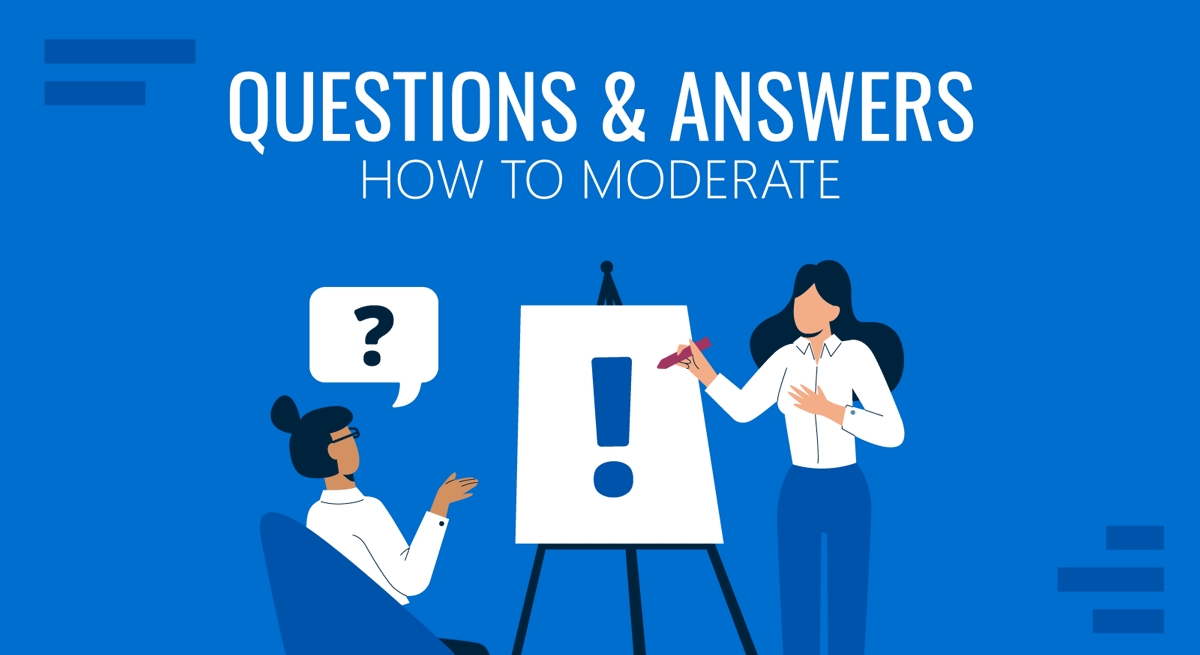
An unconventional question is the one thing that can ruin the presentation you’ve been preparing for. Picture this, you are in the middle of a talk, and someone from the audience shoots a query like a stray bullet. Now, you’re scratching for answers, and your credibility is in maximum exposure.
Questions play a significant role in enhancing the overall effectiveness of a presentation as it allows you to assess the audience’s understanding of the content you presented and engage with them on a deeper level. You don’t want to dodge the queries. Including a well-structured Q&A session within your presentation is vital.
This article explores how to moderate question and answer sessions effectively and how you can prepare for them.
Why Is Question-and-Answer Session Important?
So, why is it important to include a question-and-answer session in a presentation?
Dale Carnegie sums up the importance of questions in various aspects of life in his book, How to Win Friends and Influence People . “Questions are the key that unlocks doors of opportunity and locks out doubt and uncertainty,” he said.
Let’s look at the above quote through the lens of a presenter and break down the benefits that can turn out from a stressful Q&A session.
It provides clarification. During a Q&A session, participants can seek clarifications on any unclear points or misunderstandings. This allows presenters to address any misconceptions by providing additional information or context.
It allows you to overcome objections. Your audience may have concerns or doubts about your arguments. Use the Q&A session to listen to your audience’s concerns and address them directly. You may build trust and win over some audiences.
It demonstrates your expertise. A well-handled Q&A session can showcase your expertise and knowledge on the topic. By providing accurate and thoughtful responses to questions, you can establish yourself as an expert in your field, further reinforcing your credibility and authority.
It provides you with a different perspective. Through the questions asked during a Q&A session, you can gain insights into your audience’s perspectives. This will help you understand the audience’s needs and plan future presentations or business strategies.
Real-Life Scenarios for Q&A Sessions
Business Presentations. Q&A sessions are commonly used in business presentations , such as sales pitches and investor meetings. This allows you to address any concerns or objections of unconvinced prospects and help them arrive at a buying decision.
Training or Workshops. Q&A sessions are often included in training sessions or workshops, where participants may have questions about the material being taught or need further explanations. Q&A sessions can foster active participation, encourage learning, and provide opportunities for participants to seek clarification on concepts or practical applications.
Public Speaking Engagements. Q&A sessions are often included in public speaking engagements, such as conferences, seminars, and webinars. In these scenarios, the Q&A session allows the speaker to interact with the audience, address their concerns, and provide additional information.
Town Hall Meetings. Q&A sessions are often included in town hall meetings or open forums, where employees or stakeholders can ask questions to leadership or management. This allows for transparency, communication, and engagement with the audience, addressing their concerns or feedback.
A question and answer (Q&A) session can be helpful in various business scenarios, but it’s not mandatory for every presentation. Consider the nature of your presentation (is it complex?) and your audience’s needs and time constraints.
How to Prepare for a Q&A Session
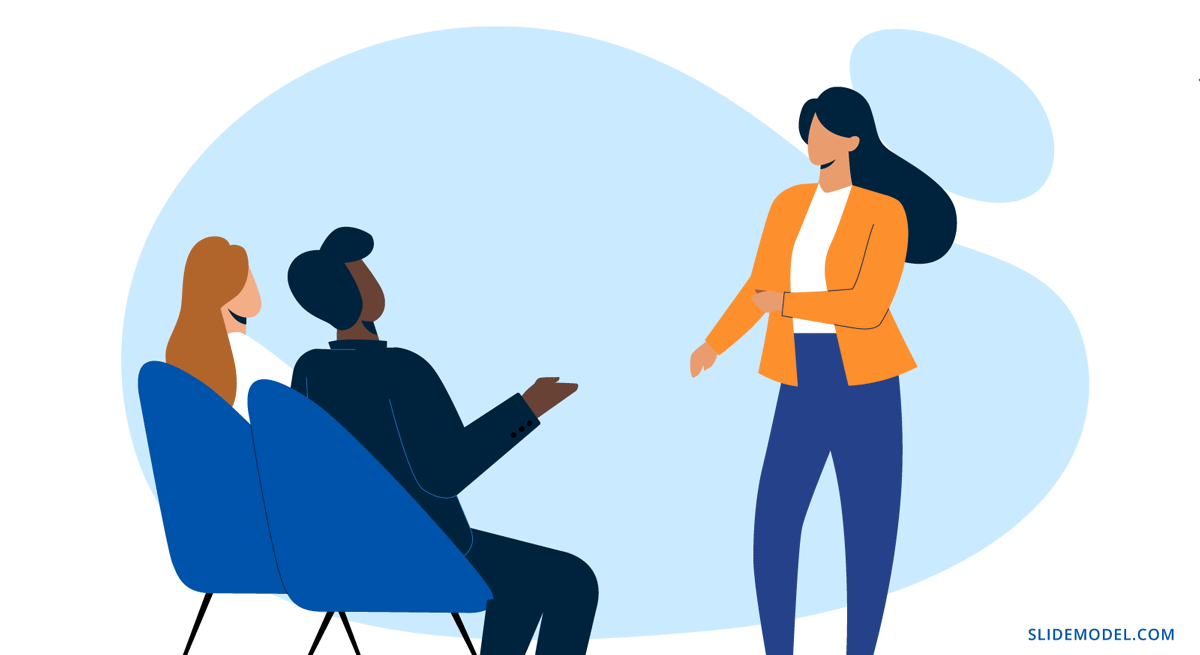
Identify Potential Questions That May Come Up
The groundwork you do for your presentation, such as doing the research and preparing the PowerPoint template , pretty much prepares you for the potential questions that may arise during the big day.
In the planning phase of your presentation, you conduct research and gather relevant information on your topic. This includes identifying key points, data, statistics, and references you will present. Assuming that you don’t skip any of the background work, you’re on your way to answering questions confidently during the Q&A session.
Of course, you also have to consider the background of your audience. What are their demographics or their level of familiarity with the topic? This understanding will help you anticipate their questions and tailor responses that resonate with their perspective.
Establish Clear Guidelines for Questions
It is important to set ground rules on how you would like to address questions to ensure a smooth-sailing presentation. At the beginning of your talk, discuss the flow of your presentation, including when you’ll be entertaining queries from the audience.
If you want them to keep their questions at the end of the discussion, say so and allocate an ample time for Q&A. You should also establish clear guidelines on how they should ask their questions (e.g., raise their hand, submit in writing).
Some presenters would specify topics or areas they are willing to discuss. However, it is dangerous to come across as controlling or restrictive and may negatively impact the dynamics of the presentation.
In a sales pitch , for example, the goal of a Q&A is to build rapport and trust with the prospects. Dictating what questions they can ask may not align with the principles of customer-centric selling.
Encourage Pre-Session Questions
Encourage attendees to submit questions beforehand through email, a designated online platform, or in person. Doing so will provide you with valuable insights into your audience’s specific needs and expectations. It will also help you proactively address their concerns during your presentation without waiting for the Q&A segment.
Collect Questions During the Presentation
Attendees may forget their questions if they have to hold onto them until the Q&A session. Instead of saving all the questions for the end of the presentation , you can actively encourage the audience to submit questions during the presentation itself.
There are several ways to collect questions throughout the presentation. One common approach is to use a live chat or Q&A feature in virtual presentation platforms.
Another approach is to use audience response systems or polling tools, such as Mentimeter, Slido, or Poll Everywhere, allowing the audience to submit or vote on existing questions during the presentation.
The presenter or moderator can then periodically review the incoming questions and pick the most relevant to address in the Q&A.
Best Moderation Practices During Q&As
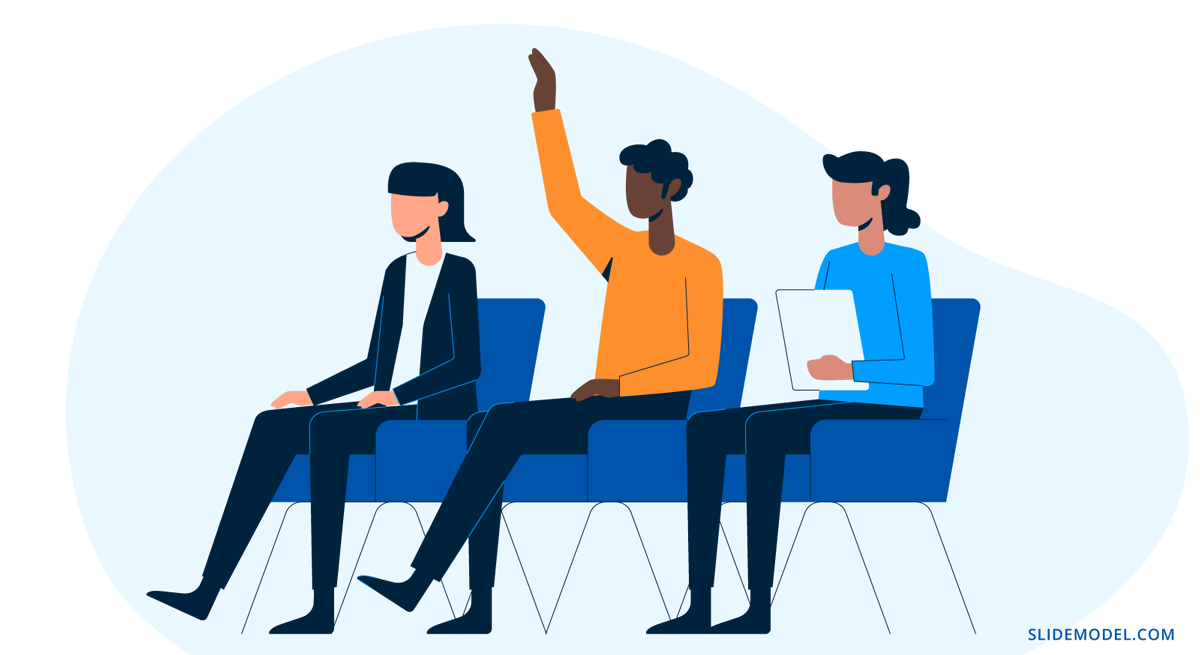
Choose the Right Time to Open the Floor to Questions
If your presentation is interactive and encourages audience participation, you can pause at certain points and invite questions from the audience. This approach can help keep the audience engaged and address immediate clarifications or concerns.
On the other hand, if you dedicated time to questions at the end of the presentation, you can announce when the Q&A portion began. A Q&A slide in the background may also help to set the mood.
Listen to the Whole Question
When moderating a Q&A, listening to the whole question actively is important. If you interrupt the participant before they finish their question, you risk misinterpreting them and missing important details. Jumping to conclusions or assumptions can lead to inaccurate or incomplete responses and may not fully address the participant’s concern.
The best practice is to give your undivided attention to the participant delivering the question and pause to come up with a thoughtful answer. This will also allow you to seek clarification to complex or ambiguous questions.
Keep Responses Succinct and On-topic
When addressing a question, keep it focused and brief. Avoid long-winded explanations or excessive details that go beyond the scope of the query.
The technique here is to structure your response in a logical and organized manner. For instance, you can start by restating the question, followed by your key points and some tangible examples.
Afterward, return to the questionnaire and ask if you can address their concern.
Redirect Irrelevant or Inappropriate Questions
It’s not new to encounter questions from the left field during Q&As. As the presenter, you can refuse to answer irrelevant questions.
However, if you think the questioner is genuinely curious, you may seek clarification to understand their perspective better. You may say along the lines of, “That’s an interesting question. Could you please provide more context or clarify how it relates to our current topic?”
If you still find the question irrelevant, you can politely decline to answer it. You can say, “Thank you for your question, but it seems unrelated to our presentation’s topic.”
Regardless of how you respond, it’s important to maintain professionalism and avoid being dismissive or confrontational.
Dealing With Aggressive or Hostile Participants During Q&As
Sometimes, one audience member will aggressively shoot up their hands to criticize and attack your presentation. And often, you cannot dismiss them. Remember, you must control this situation while still being diplomatic, no matter how tempting it is to push back aggressively.
A good tip from psychology professor Susan Fiske is to focus on what they’re saying rather than how they’re saying it. Avoid getting defensive or reacting emotionally to their tone, as it may escalate the situation.
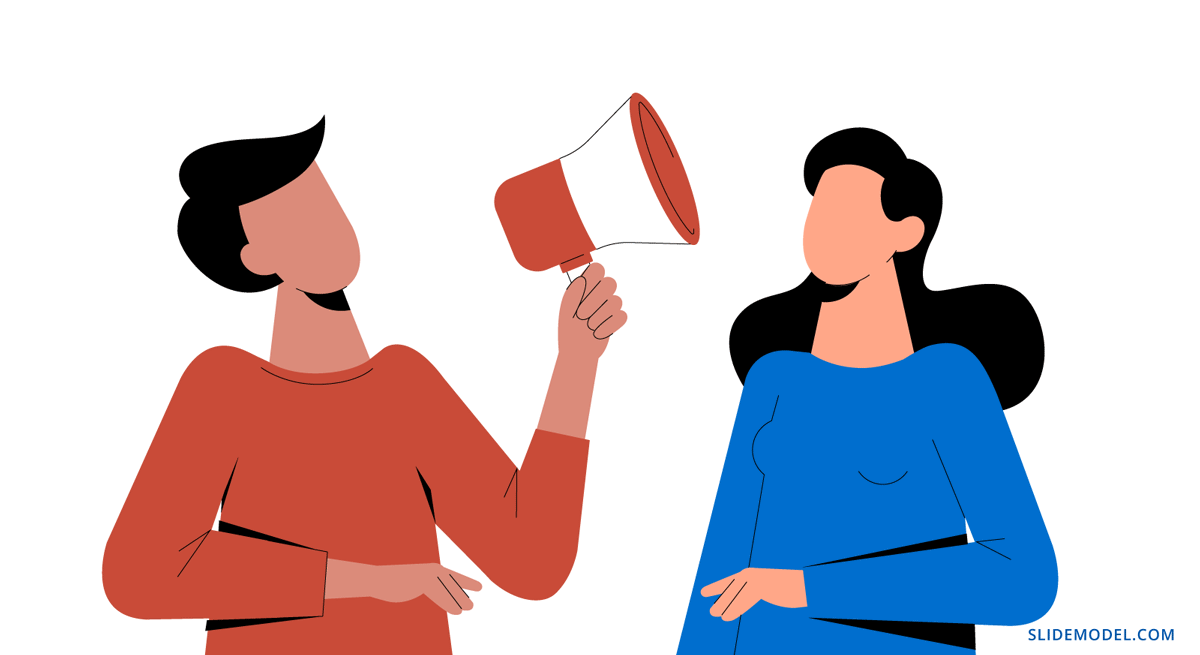
When addressing their concern, start setting the common ground – mention where you agree. For example, you could say, “I appreciate your perspective on this issue, and I agree that…”
Let’s use this in a mock-up scenario.
Audience member: “I don’t think your marketing strategy will be effective; it’s too costly and doesn’t align with our target audience.”
Thank you for sharing your perspective. I appreciate your input on this issue, and I agree that cost-effectiveness and alignment with our target audience are critical considerations in our marketing strategy. The proposed strategy is based on market trends and consumer behavior data and has the potential to yield positive results. We value your input in helping us optimize our strategy, and I would be happy to discuss this further.
By actively acknowledging and expressing agreement, the speaker made the unconvinced audience feel heard while reassuring them that the marketing strategy had been carefully planned.
As you can see, a well-structured and effectively moderated question-and-answer (Q&A) session can greatly enhance the overall effectiveness of a presentation. By preparing for potential questions, setting clear guidelines, encouraging pre-session questions, and collecting questions during the presentation, you can be better equipped to handle questions from the audience.
Use the moderation tips we’ve provided in this article, so you can confidently navigate Q&A sessions and maintain your credibility with your audience.
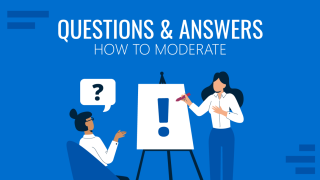
Like this article? Please share
Presentation Skills Filed under Business
Related Articles

Filed under Google Slides Tutorials • May 22nd, 2024
How to Translate Google Slides
Whereas Google Slides doesn’t allow to natively translate slides, such process is possible thanks to third-party add-ons. Learn how to translate Google Slides with this guide!
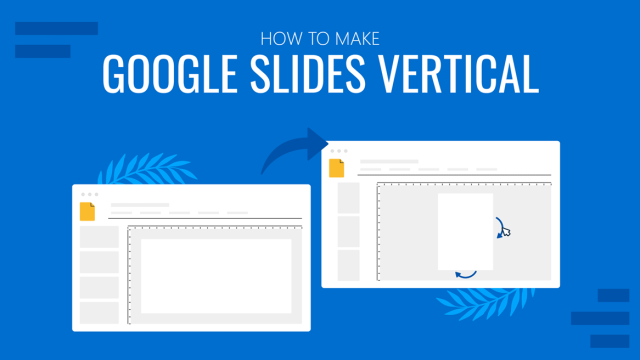
Filed under Google Slides Tutorials • May 17th, 2024
How to Make Google Slides Vertical
Power up your presentation skills by learning how to make google slides go vertical. Step-by-step instructions with examples.

Filed under PowerPoint Tutorials • April 1st, 2024
How to Add Subscript and Superscript in PowerPoint
Using subscript and superscript in PowerPoint shouldn’t be a challenge. Learn how to properly use these two special type symbols with this guide.
Leave a Reply
Got any suggestions?
We want to hear from you! Send us a message and help improve Slidesgo
Top searches
Trending searches

26 templates

6 templates

first day of school
68 templates
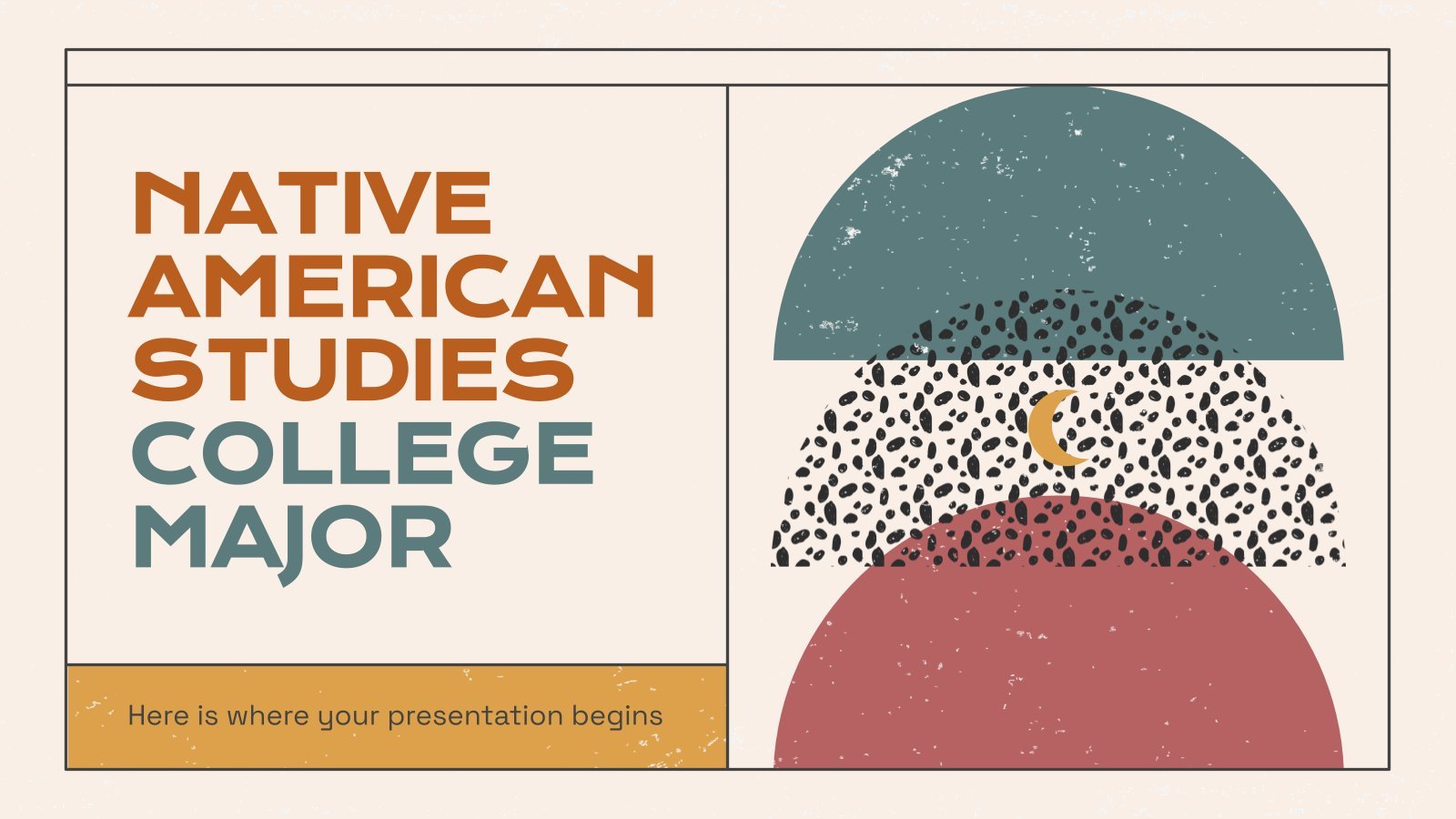
72 templates

indigenous canada
8 templates

48 templates
Q&A for Business Presentation
It seems that you like this template, q&a for business presentation presentation, free google slides theme, powerpoint template, and canva presentation template.
Presenting your company's Q&A doesn't have to be boring. This creative Q&A presentation template for Google Slides and PowerPoint is the perfect tool to make your Q&A sessions stand out with a modern, professional design. It features abstract wave designs in cream and blue, ideal for a proffesional look with a hint of creativity. The template includes a range of layouts with various ways to represent questions, answers and sections, ensuring you can make the most of your time to present the information in an interesting and visually appealing manner. Download it now and bring your Q&A to life!
Features of this template
- 100% editable and easy to modify
- 35 different slides to impress your audience
- Contains easy-to-edit graphics such as graphs, maps, tables, timelines and mockups
- Includes 500+ icons and Flaticon’s extension for customizing your slides
- Designed to be used in Google Slides, Canva, and Microsoft PowerPoint
- 16:9 widescreen format suitable for all types of screens
- Includes information about fonts, colors, and credits of the resources used
How can I use the template?
Am I free to use the templates?
How to attribute?
Attribution required If you are a free user, you must attribute Slidesgo by keeping the slide where the credits appear. How to attribute?
Related posts on our blog.

How to Add, Duplicate, Move, Delete or Hide Slides in Google Slides

How to Change Layouts in PowerPoint

How to Change the Slide Size in Google Slides
Related presentations.
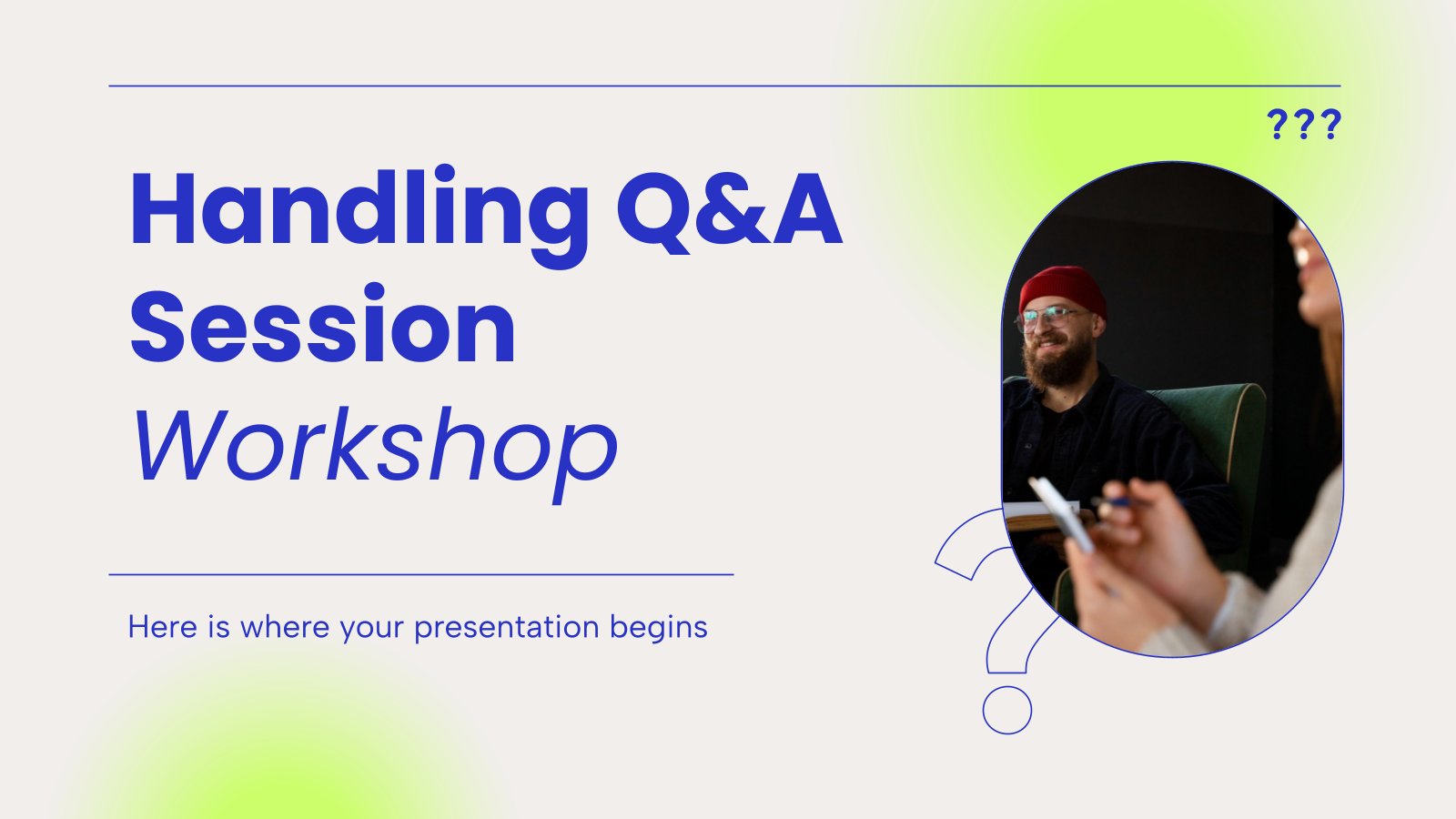
Premium template
Unlock this template and gain unlimited access
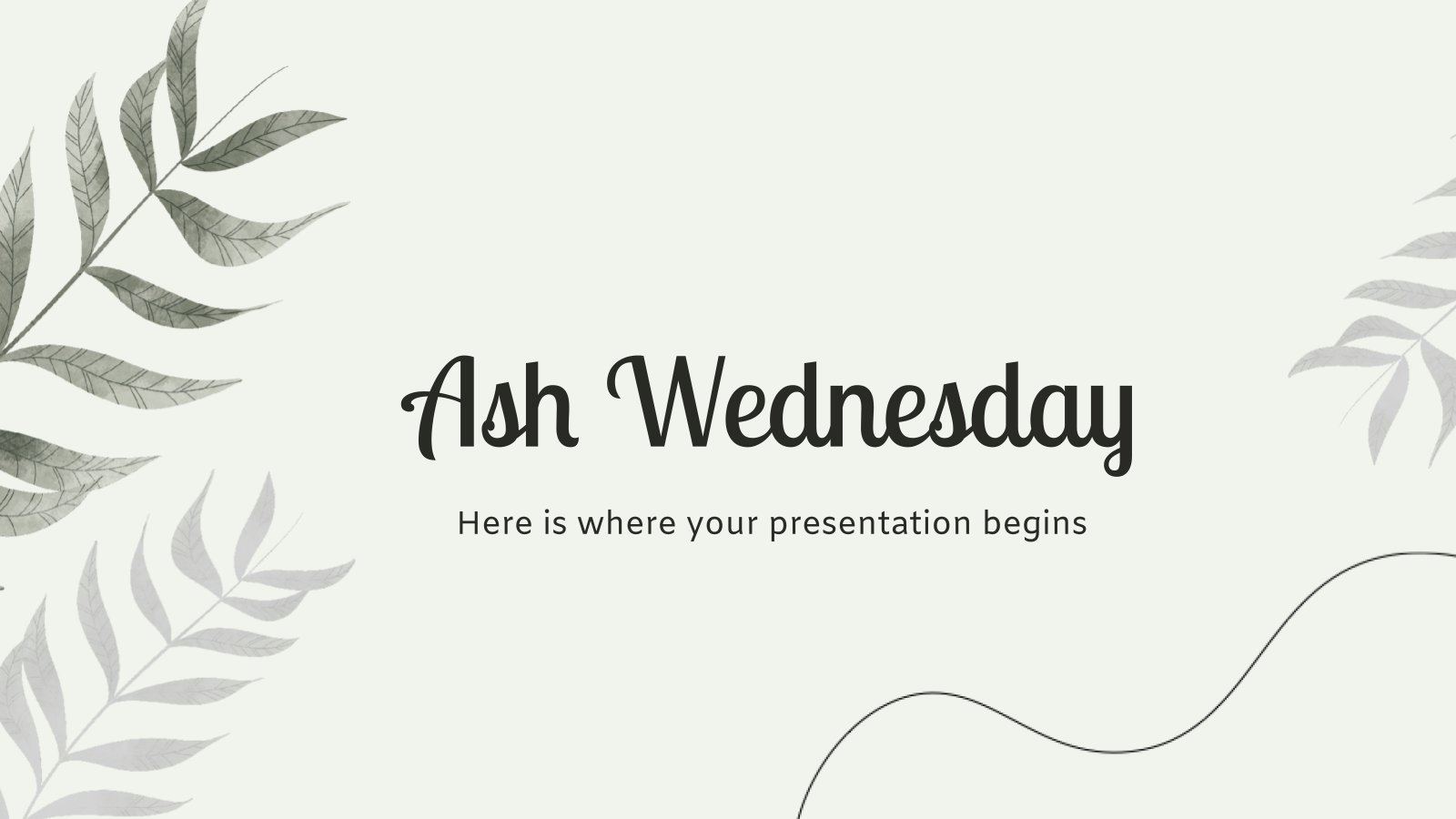
Register for free and start editing online

COMMENTS
Beforehand, think through the types of questions audience members might ask. Put yourself in your shoes and ask yourself what concerns they might have about how your message impacts their job ...
Q&A questions, short for "Questions and Answers", are inquiries posed by an audience or participants to the speaker or presenter during the Q&A session of a presentation. This Q&A segment typically follows a presentation, a talk or a lecture, providing the opportunities for the audience to seek clarification, ask additional information, or ...
6. Notify the audience at the start. At the start of the event, let your audience know that you will be running a Q&A and when it will take place. This helps your audience to think about what they might like to ask and to wait until the time is right. 7. Collect questions throughout the event.
5. Library PowerPoint Template. The Library template has several great slide designs that can be used to make impactful Any Questions final slides. The template comes with image placeholders and three premade color schemes. It was designed in widescreen resolution and is easy to edit.
A Q&A session at the end of a presentation is a common practice in many professional settings, including business meetings, academic lectures, and conferences. It provides the audience with an opportunity to seek clarification, engage with the speaker, and delve deeper into the topic discussed.
Either way, it'll make your Q&A even more useful for your audience. 6. Stay in Control. If an audience member starts to ramble, don't be afraid to rein them in. Gently interrupt and clarify to keep the session relevant, interesting, and on-topic for the rest of your audience.
The Q&A or fireside chat has become a popular format at events like conferences and employee town-halls, replacing more-formal presentations and panels. But to make the format work, the person ...
However, Q&A sessions are not risk-free; they can get out of hand pretty quickly if you don't manage them properly. Questions unrelated to the topic pop up, criticism of the presentation swells in volume, or someone wants to make a name for themself and hogs all the speaking time, leaving others frustrated.
4. Concise and Clear Responses. Speakers should always keep their responses short, clear, and focused on the problem when answering questions. Before organizing the Q and A session, you should also thoroughly research and prepare for the session's main theme.
There are many presentation techniques that enhance the value of your Q&A sessions, but the most important is to treat them as part two of your presentation and prepare as much as possible. If part one is the formal delivery using speaker-support slides , then the Q&A is an informal follow-up session in which further content is delivered in the ...
Presentation expert Nancy Duarte, who gave the TED Talk " The secret structure of great talks ," has built her career helping people express their ideas in presentations. The author of Slide:ology and Resonate, Duarte has just released a new book through the Harvard Business Review: The HBR Guide to Persuasive Presentations.
Identify areas for potential questions based on your background research, and draft some answers in advance. - Set time limit. The Q&A session doesn't have to be a free for all! State clearly that this is the time for questions, and that time is limited. Don't let people talk endlessly or give their own "mini-presentation". - Start ...
Leading the Perfect Q&A. A great Q&A session (#16 on my list of 25 essential skills for a public speaker) does not materialize just because you (or the event organizers) include it on the agenda. A great Q&A session - one that adds value to your presentation - requires planning and thoughtful contributions from both the audience and the ...
First, it brings the attention of the audience back to you, rather than the person asking the question. Second, in a large room, the question may not have been heard by everyone. Your repeating it allows each person to know what you are going to talk about. Third, it gives you time to think of how to answer. Remember to stay on track and answer ...
So try these tips to encourage questions: 1. PREPPING YOUR Q&A: > TIP THEM OFF EARLY: As you start your presentation, tell your audience: "I'll take all your questions at the end, so write down your questions as you think of them along the way.". That'll get them active thinking of questions throughout your presentation.
Here you are: 8 Tips to Facilitate a Great Q&A Session | SLIDO VLOG #3. Watch on. 1. Include Q&A directly in your agenda and dedicate enough time to it. Make the Q&A section a fixed part of your all-company meeting agenda to keep a regular communication flow with your employees.
To effectively provide insights into the business challenges that your company must face, we have devised excellent q&a slide templates that give you the flexibility to frame your questions and change the icons, images, or patterns per your business norms. It is customizable, editable and content-ready. You are just a step away from getting ...
Your Q&A session is the time for you to loosen your proverbial tie and show the audience your personality and humor. Having a sense of humor about yourself shows confidence - you can't be ruffled, even when someone asks you something personal. Having a sense of humor means not being a control freak and worrying about making mistakes.
Focus on your ideas, not set up. Slides Q&A makes it easy to interact with your audience — without having to worry about mics or moderators. Slides also helps you get your big ideas and stories on screen — without having to worry about wires or set up stress. Starting today, we're improving this "Show up, don't setup" experience in two ways:
During the Presentation Q&A Session Step 1: Open the Q&A session. Tell your audience that you are starting the Q&A session. Presenter: "I will now answer any questions you have about this research. Please speak slowly and clearly." Step 2: Clarify the question asked. You should understand a question before you try to respond.
Real-Life Scenarios for Q&A Sessions. Business Presentations. Q&A sessions are commonly used in business presentations, such as sales pitches and investor meetings. This allows you to address any concerns or objections of unconvinced prospects and help them arrive at a buying decision.
This creative Q&A presentation template for Google Slides and PowerPoint is the perfect tool to make your Q&A sessions stand out with a modern, professional design. It features abstract wave designs in cream and blue, ideal for a proffesional look with a hint of creativity. The template includes a range of layouts with various ways to represent ...
4. Stay Composed. Be the first to add your personal experience. 5. Engage Directly. Be the first to add your personal experience. 6. Reflect and Adapt. Be the first to add your personal experience.
Enhance your presentation with a Q&A. Make your Mentimeter presentations even more inclusive by allowing your audience to pose questions directly and anonymously. Add Q&A slides or let your audience input their questions throughout your presentation. Combine with the Mentimote to enable question moderation.
Currently been asked to give a Presentation on a topic that i am only vaguely familiar with. I might get some info and put it on a slide and give a brief explanation on all the information on all slides. its just the Q&A portion im worried about.
The webinar will feature a presentation on INFOSAN's mechanisms for identifying, reporting, and responding to food safety incidents worldwide. This online gathering also gives an opportunity to celebrate the 20th anniversary of INFOSAN. The webinar will include a Q&A session with the online audience.
Audio Streaming (Presentation/Q&A) Integrated Report (former Annual Report) Our Integrated Report is intended to provide a wide range of stakeholders with both financial and non-financial information, including management strategies, business performance & financial conditions, and environmental & corporate governance initiatives.
The event will include formal presentations and two Q&A panel sessions with the executive team. Ahead of the presentations, US Foods announced that its board has authorized a $1 billion share ...
The Boston Business Journal features local business news about Boston. We also provide tools to help businesses grow, network and hire.
We would like to invite you to the Campus Presentation for the Office of International Programs Director Candidate - Tracy Nakajima. The prompt: "Develop a presentation focused on optimizing service processes and enhancing educational programs for international students. Propose strategies and best practices for streamlining service processes to improve efficiency and responsiveness.